
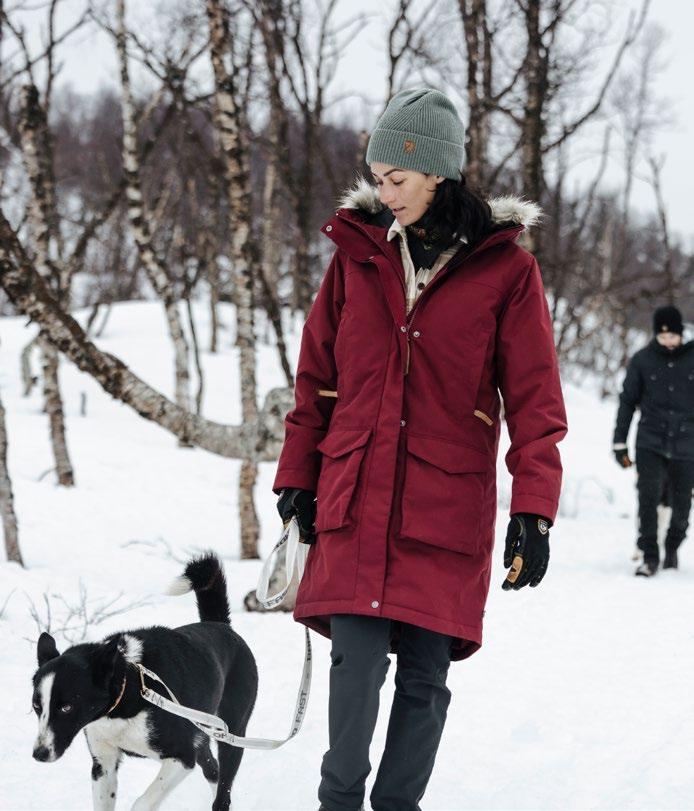

fjallraven.com Find your local store: NUUK LITE PARKA Waterproof | Windproof | Breathable Produced without PFCs


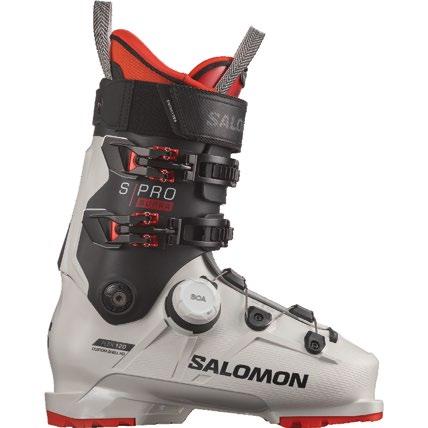


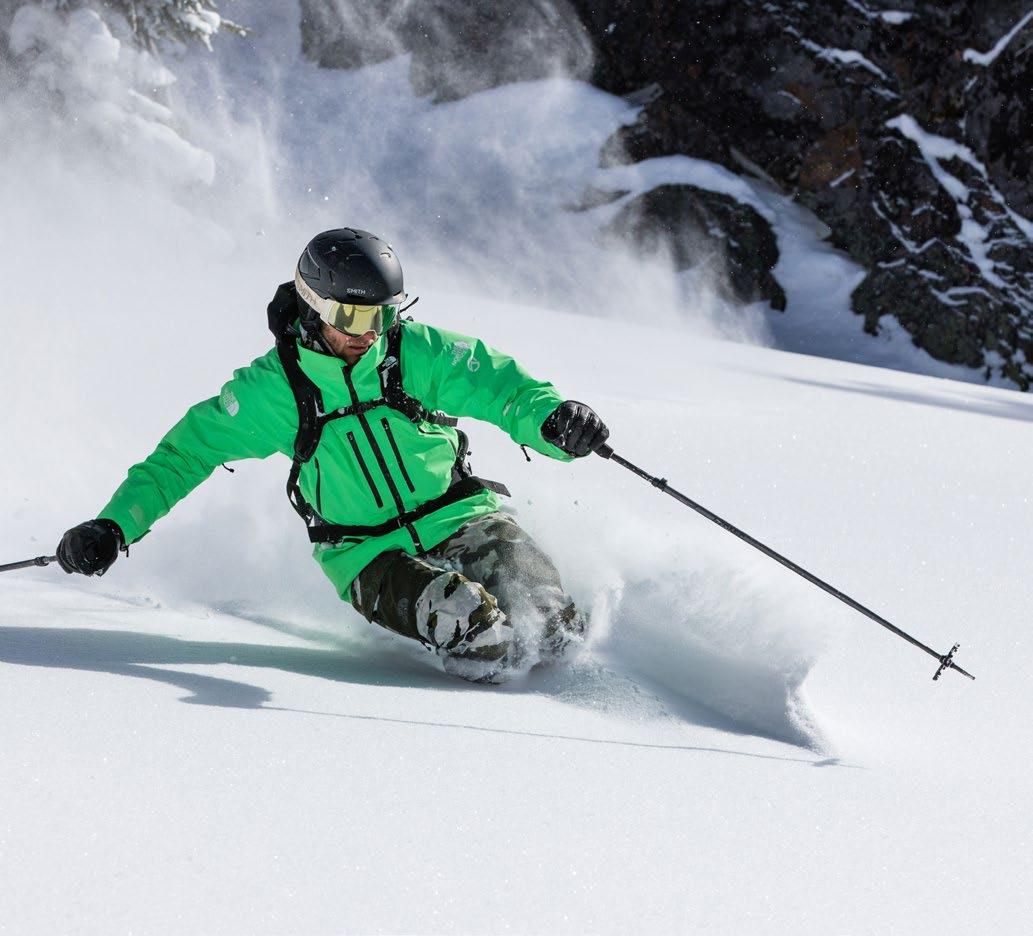



The 4D MAG Featuring Birdseye Vision and ChromaPop™️ Lens Technology





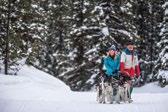
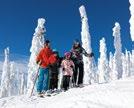
















YETI Ambassador Tatum Monod
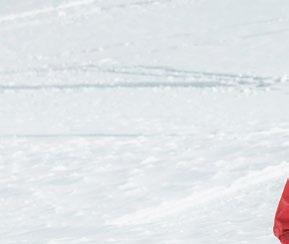





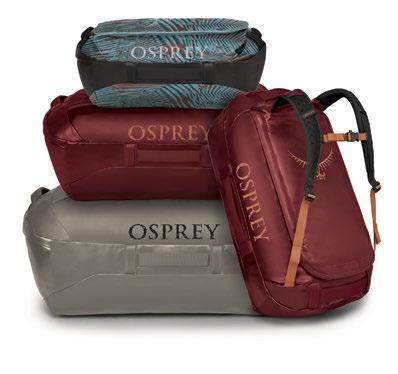

We Live to Discover sail.ca

10
P. 16 Behind the Photo
P. 35 Athlete Profile - Holly Blefgen
P. 38 Fresh Air - Ocean as Teacher
P. 48 Photographer Spotlight - Esme Batten

P. 54 Backyard - The Telltale Plink
P. 58 Wheel Well - Bromont
P. 61 Biophiliac - But What Can I Do?
P. 67 Mountain Home - Chalet Love
P. 74 Backyard - The Freedom of Darkness
P. 77 The Beta
P. 80 Gallery
P. 89 Gear Shed
P. 98 Backpage - A Lifetime of Trips
ON THIS PAGE Philip Edward Island. ARIEL ESTULIN ON THE COVER Peter deMos on the Rise ’n Shine Trail, Porcupine Ridge, Bracebridge. PAULO LABERGE 11
UPFRONT
FEATURES P. 14 Editorial
P. 18 Search and RECCO
P. 21 RACE for Mental Health
P. 28 The Wapta
P. 42 Riding Rhodes DEPARTMENTS
TABLE of CONTENTS
PUBLISHERS
Glen Harris glen@mountainlifemedia.ca
Jon Burak jon@mountainlifemedia.ca
Todd Lawson todd@mountainlifemedia.ca
EDITOR
Kristin Schnelten kristin@mountainlifemedia.ca
CREATIVE & PRODUCTION DIRECTOR, DESIGNER

Amélie Légaré amelie@mountainlifemedia.ca
WEB EDITOR
Ned Morgan ned@mountainlifemedia.ca
CONTRIBUTING EDITORS

Allison Kennedy Davies allison@mountainlifemedia.ca
Colin Field colin@mountainlifemedia.ca
Scott Parent scott@mountainlifemedia.ca
DIRECTOR OF MARKETING, DIGITAL & SOCIAL
Sarah Bulford sarah@mountainlifemedia.ca
FINANCIAL CONTROLLER
Krista Currie krista@mountainlifemedia.ca
DISTRIBUTION
Brendan Thompson brendan@mountainlifemedia.ca
CONTRIBUTORS

Leslie Anthony, Esme Batten, Deirdre Buryk, Claire Cameron, Melanie Chambers, Sarah Chisholm, Geoff Coombs, Matt Cote, Alain Denis, John Dryden, Jeff Fletcher, Caitlin Foisy, Noa Hawthorn Harris, Kennan Harvey, Molly Hurford, Lani Imre, Maddie Johnson, Dustin Johnston-Jewel, Jenna Kitchings, Asta Kovanen, Reuben Krabbe, Paulo LaBerge, Benny Marr, Drew McIvor, Conor Mihell, Carl Michener, Ryan Osman, Michael Overbeck, Mike Penney, Shawn Robertson, Richard Roth, Dan Rubinstein, Peter L. Storck, William Tam, Juliet Tanas, Heather Thompson, Tom Thwaits, Leslie Timms, Kyle Wicks, Jody Wilson.
SALES & MARKETING
Glen Harris glen@mountainlifemedia.ca 705 441 6334
Bob Koven bobby@mountainlifemedia.ca 416 721 9940
Stephanie Martinek steph@mountainlifemedia.ca 705 441 3684
Mike Strimas mike@mountainlifemedia.ca 416 779 7908
Published by Mountain Life Publishing Inc, Copyright © 2023. All rights reserved. Reproduction without permission is prohibited. To distribute Mountain Life in your store please call 705 441 6334.
OUR COMMITMENT TO THE ENVIRONMENT
Mountain Life is printed on paper that is Forest Stewardship Council ® (FSC ®) certified. The Forest Stewardship Council® is an international nongovernmental organization that promotes environmentally appropriate, socially beneficial, and economically viable management of the world’s forests. Mountain Life is also PrintReleaf certified. It measures our paper consumption and calculates the forest impact. Our paper footprint is automatically reforested at planting sites in Canada.
Impossibly light. Intentionally warm.


We take exploration seriously—and now it’s time to lighten up. Introducing CircaloftTM, insulation crafted with Circular Design methods to help keep resources in use and out of landfills.
 Austin Smith | Snowboarder, The North Face Athlete Team
Austin Smith | Snowboarder, The North Face Athlete Team
A Granny-bike Revolution
Last spring, my husband spotted a discarded ‘80s-era Raleigh lying beneath a cardboard “FREE” sign on the side of the road. He tossed it into the truck and later presented it with much fanfare to his speechless wife.
With flat, cracked tires, non-functional brakes and a rusted black frame, its plastic duct-taped fenders were so misshapen they prohibited pedalling.
It was perfect.
For years I’d been fawning over bicycles from The Netherlands, where an omafiets (grandma bicycle) is the standard choice for bikes and bikes are standard transportation. Heavy and clunky, they’re built not for speed nor style, but function alone. Requiring little maintenance and situating the rider in an upright position, they safely and comfortably get you from point A to point B. A smart tool for a simple job.
Getting your hands on an omafiets was difficult in North America until a nonprofit in Winnipeg began importing used models, one jam-packed shipping container at a time. The Plain Bicycle Project, which calls its efforts a “culture bomb,” now carries brandnew Dutch bicycles (as do many other retailers), but still regularly brings in containers filled with piles of castoffs, dispersing the workhorses like so many sermons in its steadfast effort to change our way of thinking about urban travel.
Living rurally, in a tiny village with only a handful of services, I couldn’t justify the purchase of even a used omafiets—how often
would I really be riding to the neighbourhood LCBO? (Don’t answer that question.) So I resigned myself to pining.
With the gift of the junked bike, my spirits lifted. Making it rideable became a project. Sticking to our $10 budget, we scrounged, repurposed and bartered our way to an upright utilitarian bike whose pedals crank, wheels turn, brakes (usually) work and three gears (sometimes) function.
No, it isn’t a real omafiets. The step-through is more of a stepover, the gears aren’t internal, the handlebar height self-adjusts on a whim. There’s no built-in light and the fenders are now long gone. But. In practice, my fauxmafiets (and its knackered bell that autorings at every bump) excels at its job: keeping one gas-guzzling SUV off the road, one kilometre at a time.
As the summer rolled by, I found myself parking my townie bike at the front door, propped at the ready. I began fabricating local tasks, searching for an opportunity to keep her on the road. After discovering the weekly Collingwood grocery run would increase by only 90 minutes via bike, I schemed of panniers large enough for the haul—and considered upping my budget for a used pedal-assist.
On its website the Plain Bicycle Project asserts, “We all know the planet needs a shift to cycling. Human-powered transport can’t wait. When the bike boom becomes a bike era, it will arrive on an omafiets.”
Or perhaps on a nearly free, nearly dead, definitely dreamy, abandoned ‘80s beater bike. – Kristin Schnelten

14 EDITORIAL
Pedalling is preservation. KRISTIN SCHNELTEN
VISIT US AT QUEEN ST. CF EATON CENTRE YORKDALE SQUARE ONE
VAUGHAN MILLS TORONTO PREMIUM OUTLETS


Max Kroneck
Vincent Daviet
Claudia Ballet Baz Journeyman Tenure, Callaghan Country, BC





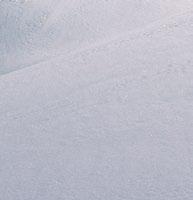

@arcteryxtoronto

16 UPFRONT
BEHIND THE PHOTO
words and photo :: Mike Penney location :: Catch the Sun (5.12d), Devil’s Glen Provincial Park climber :: Mike Smythe
As temperatures fall and leaves change, climbing crags empty and only the truly committed remain to battle numb fingers and cold winds. On a crisp afternoon in October, Mike Smythe did his best to ignore the chill and struggled to connect with Catch the Sun (5.12d) at Devil’s Glen Provincial Park.
The route is located in an area of the park known as the Sun Worshiper Wall for its solarium-like quality. As the early winter cold sets in, this wall is often 5 to 10 degrees warmer than others, and remains the last bastion of climbable rock.
Although climbers have been tackling crags like these throughout Ontario Parks lands for more than 50 years, Ontario Park management plans have never formally recognized rock climbing as a permitted recreation. After tolerating climbers for many years, Ontario Parks moved to enforce a climbing closure at both Devil’s Glen Provincial Park and Lion’s Head Provincial Park in the summer of 2023.
In response, the Ontario Alliance of Climbers (OAC) mobilized the climbing community and launched a lobbying campaign urging the Ministry of the Environment, Conservation and Parks to consider supporting rock climbing as a safe, healthy and growing sport aligned with conservation values.
The Ministry responded positively, reopening Devil’s Glen and Lion’s Head Provincial Park to climbers. The province plans to conduct site assessments and engage with municipal partners, Indigenous communities and the public as part of the planning process. Meanwhile, the OAC will continue to work with Ontario Parks and the Ministry to update park management plans and push for formalized access.

17
Photographer Mike Penney is the board of directors co-chair at the OAC.
Search and RECCO
Lost in the wilderness, a tiny reflector provides a flicker of hope
With the explosion of backcountry travel, making more people more searchable has become a Holy Grail for Search and Rescue (SAR) organizations. Fortuitously, this has been one outdoor company’s mission from the outset.
On December 30, 1973, RECCO founder Magnus Granhed witnessed an avalanche in the ski resort of Åre, Sweden. With no rescue equipment at the time, it took hours of blind searching to eventually uncover two victims, and Granhed couldn’t help but think there had to be a faster way to search. Working with electronics engineers at the Swedish Royal Institute of Technology, they hit on the idea of harmonic radar, in which a signal sent at one frequency bounces back at double the frequency from a reflector; the reflector would be on a buried person, and the sender-detector held by a searcher. By the early 1980s they had a hand-held detector prototype—the R1. Though a cumbersome 16 kg with a range of only a metre, it worked.
After a successful demonstration to Austrian media, avalanche specialists and SAR folks in 1982, RECCO introduced its first small reflectors to the market. In 1984, Trappeur ski boots became the first product to integrate RECCO reflectors; in 1986, Degré7 was the first clothing brand on board, and that same year Swatch added reflectors to its outdoor watches.
The R1 was long gone and new iterations became smaller, lighter and more accurate. Today, the handheld detector is barely a kilo, has a 20-metre range, and some 2,200 units reside with 900 ski resorts and rescue organizations in 28 countries.
The passive transponders—four grams each, no battery,
unlimited lifetime—can be found in the products of 150-plus outdoor brands, including helmets, pants, backpacks, climbing gear, jackets and boots. Helly Hansen has long been a strong RECCO supporter, and while it has practical reasons for working with SAR teams (several of its technical jackets were developed with insights from Squamish SAR) the association is more egalitarian: Helly is on a mission to make everyone in the outdoors searchable, encouraging other brands to get on board. Realizing that it’s no longer just about finding someone buried in an avalanche but lost in the wilderness in any season, RECCO also produces its own consumer products—including belts and free-standing reflectors that can be stuck to any kind of gear.
To match the proliferation of reflectors, RECCO introduced a dedicated detector in 2015 designed for use by any SAR group with flight capability; slung below a helicopter at 100 metres above a landscape, the chopper can run a grid search covering a 100-metre-wide swath at 100 kph—about 30 football fields per minute. Currently, four of the 30 helicopter units deployed worldwide are located in Canada, including one east of the Rockies, at Helico Secours SAR cooperative in Quebec.

In March, 2020, a hiker missing for six days near Lion’s Bay, B.C., was located in avalanche debris using the heli-mounted RECCO unit. Although this was a body recovery, it proved the potential for locating any lost individual with a RECCO reflector when conventional means (cell phone, trip-plan details) aren’t available. An inexpensive way to locate anyone and everyone—Granhed’s mission realized.
–Leslie Anthony
18
UPFRONT
The heli-mounted detector uses harmonic radar to locate RECCO reflectors—and the lost souls wearing them— over a huge area of land. MICHAEL OVERBECK
THERMAL JOURNEY | GIFT CARDS | MASSAGES

SCANDINAVE.COM
Embrace Winter
Cinder Kinetic
Be prepared for the unexpected with our Cinder Kinetic range, engineered with our softest hardshell Proflex™ fabric to bring you all-day comfort in the saddle. Highly breathable, waterproof, and stretchy, it keeps you pedalling with uncompromised mobility through sudden showers and fast-changing fall weather.
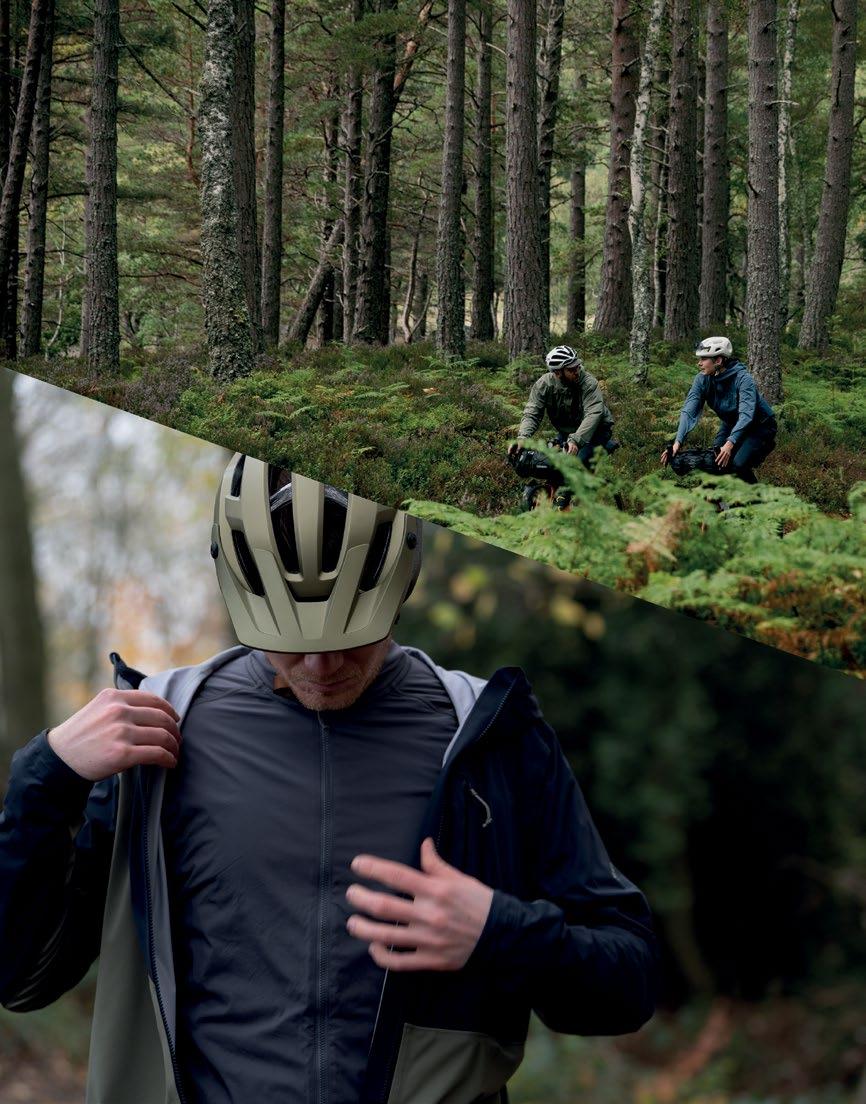
WWW.RAB.EQUIPMENT
RACE for Mental Health
Ride Across Canada Expedition raises key funds for Jack.org
Averaging 150 to 200 kilometres per day in the saddle—twice even hitting the 300-km mark—Braden Usher pedaled his stripped-down triathlon bike across Canada this summer, from Tofino, B.C., to Cape Spear, Nfld. The 8,000-km journey took a total of 49 days and by the end, he says, “I was totally inspired to just keep going.”

A personal tragedy spurred the epic endeavour. His black lab/ collie mix unexpectedly passed away, and Usher found himself taking more rides: “It was so hard to process losing him, and riding helps you do that—and, because we rode together so much, I thought it would be a beautiful celebration of his life.”
“I needed to set a goal that really scared me, but also inspired me,” adds Usher, a personal trainer in Collingwood. With his decision to raise funds for Jack.org throughout the ride, he explains, “I was biking for my mental health, but also for the mental health of others. And I was putting myself in a place of not only something that is bigger than me and I can be proud of, but also placing myself in a state of real growth.”
Jack.org largely raises funds for peer-to-peer leadership. At most post-secondary schools in every province, they create volunteer-led programs by students, providing tools for kids to take care of their mental health. Says Usher, “I wanted to raise funds for something I believe in, because I thought a ride of this size warranted that commitment.”
Usher shared his day-by-day experiences on social media, documenting injury and recovery, broken spirits and gleeful fast-food binges. His follower count increased as he inched his way across the map.
“We did a public ride-in when I reached Collingwood, and I posted to see if anyone wanted to come out as I rode into town. There was no RSVP, so I didn’t know if anyone was going to be there. There were probably 20 riders
waiting at The Peaks, and maybe 100 more waiting at Sunset Point. It was one of the coolest days of my life.”
Although his father transported his gear on some early legs, Usher completed the eastern half of the country completely solo, travelling sans panniers and crashing in hotels with only an extra bike jersey and shorts, a rain jacket and pair of sandals. He remembers, “Often I was racing the sun, trying to make it to a hotel. You’re kind of at the mercy of the highway.”
“It’s a journey that demands you to be present and really take it day by day, hour by hour. And while those hours and minutes can feel like days, it’s just putting one pedal after the other. Then occasionally you look up and think, Whoa! I’m getting close!”
And when he finally reached that finish line? “I thought, Okay, this is the closing of this ride, but it’s just a little chapter, not the end of a journey. I can still go back out. I had come around to this understanding. But I was totally inspired to keep going.”
“I thought of turning around and going back, and even thought it’d be cool to turn it into RAW—Ride Around the World for Mental Health,” he says. “If you’re crazy enough to chase these scary dreams, and have the courage to even speak them aloud, it’s wild to see what you can do.” –Kristin
Schnelten
RACE for Mental Health set a lofty goal of raising $50,000 for Jack.org, and has nearly reached its target. Learn how to donate at www. raceformentalhealth.ca
21 UPFRONT
JODY WILSON












142 Runs | 7,000 Top Elevation | 3,550ft Vertical | 2,500+ Resort Acres | 30ft Avg. of Snowfall
PH: Steve Reed
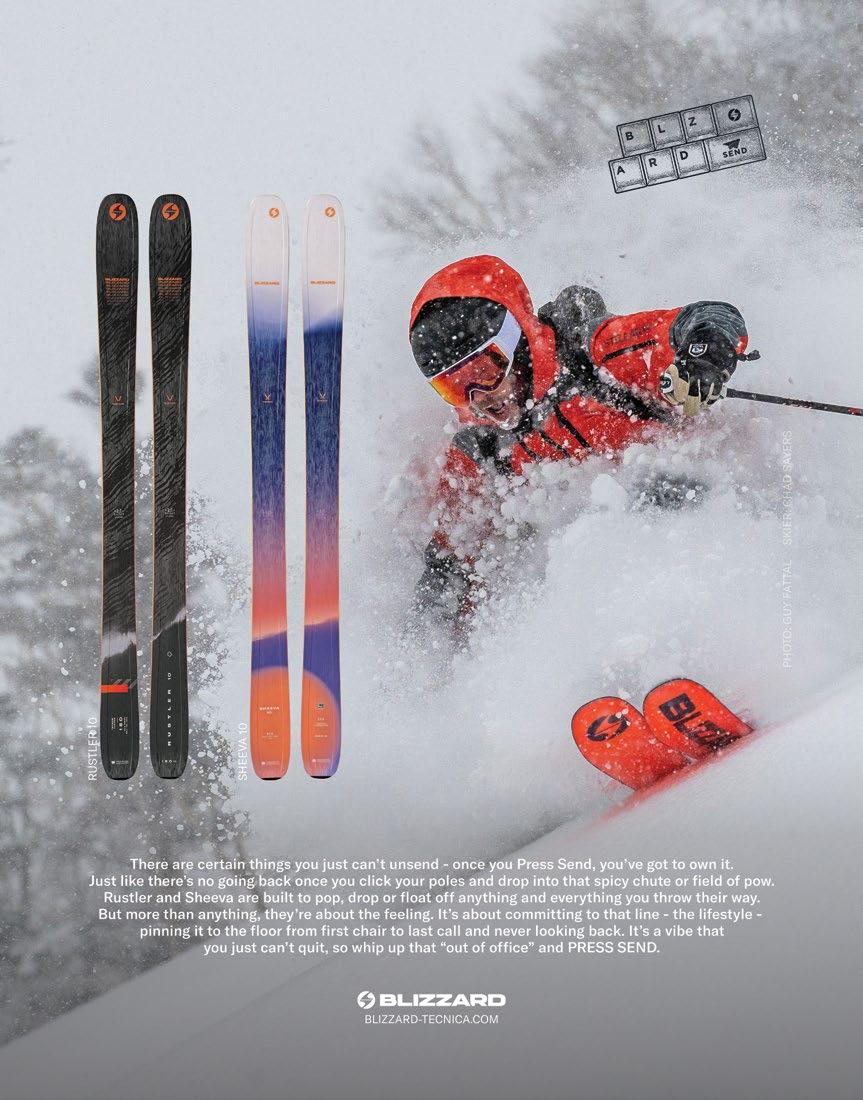
Puffy warm face protection made of ethically sourced white duck down. Designed in the Blue Mountains.







DID YOU KNOW?
40 to 45 per cent of body heat is lost through the head and neck?























Treat yourself to a puff and stay outside longer.

Choose from 4 sizes in 6 colours


pu designs.ca






A portion of the proceeds is donated to
Grab What Matters You’ll flip over the fit Introducing Swany’s X-Calibur Glove with all-new construction swanycanada.com GRIP BETTER
EASIER GREATER DEXTERITY Featuring construction
GRAB
SIT-SKIS, OUTRIGGERS AND A TREMENDOUS MUSTACHE
Jack Sim’s lifelong dedication to adaptive sports at Blue
 words :: Carl Michener
words :: Carl Michener
Headed for a summer flipping burgers, a young Jack Sim received a piece of neighbourly advice: Why not apply at a summer camp instead? The offhand suggestion sparked a fire within Jack, leading to an extraordinary, service-filled life.
That summer, he found himself sharing a rustic cabin with eight boys and two other counsellors on the shore of Lake Massawippi in Quebec’s Eastern Townships. As all the campers were deaf, Jack had no choice but to learn basic sign language—very quickly.
“It was quite amazing, because you go in with preconceived notions but then quickly learn kids are simply kids,” says Jack. He found that a “disability” quickly disappears as personalities emerge and activities take centre stage.
“While you have to make accommodations, it was really about learning to sail and canoe on the lake, doing traditional camp stuff.”
Six weeks at camp with a bunch of city kids who were deaf, and he was hooked. Almost 40 years later, Jack heads up the adaptive program at Blue Mountain Resort (BMR) and plays a role at the Ontario Track3 Adaptive Sports Association. One of the early architects of adaptive skiing in North America, Jack took on the task before he even learned to ski himself.
Resplendently mustachioed, Jack Sim is a soft-talking guy with a big personality
25 UPFRONT AT BLUE
BLUE MOUNTAIN RESORT
“There isn’t an instructor who teaches adaptive skiing that hasn’t had a moment where they were laughing and crying, all at the same time.”
and an easy smile. “I got into skiing at 30 because my girlfriend at the time told me that if I wanted to see her in the winter, I’d better learn how to ski,” he laughs. Jack was working at Toronto’s Holland Bloorview Kids Rehabilitation Hospital where, among other things, he planned and ran indoor sessions for kids coming into skiing. Then administrators asked him to teach in the program on the ski hill. “But I still barely knew how to ski,” he remembers.
As recently as five years ago, adaptive skiing was just getting organized at Blue and Jack was right in the middle of it. Along with other dedicated souls, you would find Jack after hours, huddled over lesson plans, developing training manuals and improving curriculum. These days, you can find Jack on the slopes at Blue most weekends, sporting his Holstein-patterned ski helmet, for which he’s earned the nickname “Cow Man.” He’s now a Canadian Adaptive Ski Sports Ski Level 3 instructor, a certification that came into play after he started teaching.
“Along with skiing, teaching children with disabilities has become my passion,” says Jack. “You see a child get out of a
wheelchair, into a sit-ski and do a run down the hill, then look at their parents, who never thought it was possible. Nothing compares. There isn’t an instructor who teaches adaptive skiing that hasn’t had a moment where they were laughing and crying, all at the same time.”
Jack was working as operations manager with the Ontario Track3 Adaptive Sports Association when he let BMR management know—in true Jack Sim style—that they should have their own program. He put together a proposal, and in 2016 BMR’s adaptive ski program was born.
“We’re a little bit unique,” Jack observes. “Blue Mountain Adaptive is not a charitable organization. We run programs, but we’re making it possible for people with disabilities to do pretty much everything. Skiing in the winter, the high ropes course, climbing— pretty much everything on offer in the summer. We’re here to help. It’s been pretty amazing.”
In the winter, program participants buy a ski pass and pair up with a qualified instructor, sometimes a parent of a child with disabilities. Jack originally kicked off the
program with a few sit-skis and outriggers (poles with arm braces on one end and skis on the other), and now Blue has a full fleet of sit-skis that suit both the skiers’ individual needs and the qualifications of their instructors.
Over the years, new programs have blossomed. For the past five years, Jack has been facilitating a Canadian Forces program, Soldier On, in which soldiers with various disabilities get out at Blue for organized hikes and hit the trails on bicycles, Segways and skis. His big aim now is to teach until he’s 70, but also to find someone who will take over the program for what he hopes is the next 35 years. “We need someone who’s good interpersonally, organized, able to ski and teach at the right level, work with volunteers—and that’s tough to find,” he says. Jack also hopes to keep skiing. “After my second hip replacement, my friends kidded me that I only started teaching adaptive skiing so that when I needed it, I would know the best equipment and the best teachers,” he laughs. “So I figure as long as I can come down the hill in some way, I’ll keep on doing it.”

26
Blue Mountain Resort Adaptive Program HQ. ALLISON KENNEDY DAVIES

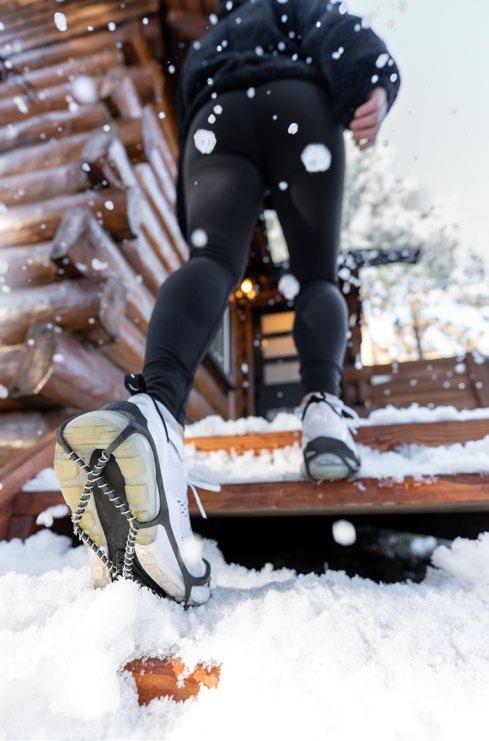




www.knockaround.ca www darntough ca www.grangerscanada.ca www.yaktrax.ca
The Wapta
Witnessing the evaporation of Canada’s celebrated glacier route

words :: Heather Thompson

28
1 2 3 4 START PEYTO HUT BOW HUT BALFOUR HUT
FINISH SHERBROOKE LAKE
SCOTT DUNCAN HUT
“The what?” was the most common response from friends and colleagues when I told them of my spring vacation plans.
For Ontario skiers, resort trips are the norm, and I’ve definitely enjoyed my fair share of lift-access March Breaks, but I wanted something different this time. I craved the solitude and serenity of backcountry skiing, and the Wapta Traverse, one of Canada’s most iconic ski tours, offered the connection and adventure I needed.
The Wapta is a four-hut trek that crosses a series of interconnected glaciers straddling both Banff and Yoho National Parks. The 600 square kilometres of glaciers feed four river systems, emptying into the Pacific, Arctic and Atlantic Oceans.
The first known ski exploration of the Wapta was in the 1930s, and over almost a century it has become a prime destination for ski mountaineering due to its low-angle glaciers and accessible high peaks (most hover around 3,000 metres), often ascended with a short, non-technical bootpack, or better yet on skis. The original huts were built in the 1960s, eliminating the need to camp and making the icefields more accessible. The Alpine Club of Canada took over the maintenance and booking of huts in 1989, completing the most recent one in 2016. That final hut allows a perpendicular route to the traditional Wapta Traverse, called the Bow-Yoho Traverse.
Along the Wapta, lucky skiers are treated to endless vistas, multiple summiting opportunities of surrounding peaks and generally low-angle powder descents. Others less fortunate might have five days of whiteout blizzard-like conditions accompanied by howling winds (making you think twice about that run to the outhouse at 2 a.m.). When we land in Alberta, the weather forecast is variable— but, blue skies or blizzards, our trek across the glaciers promises an unforgettable adventure.
Our journey commences at Peyto Lake, a common tourist stop in summer known for its aquamarine water. After traversing the
frozen lake, we’ll ascend up the Peyto Glacier to take our first steps on the Wapta Icefield. Peyto is one of the most studied glaciers in the world. Like most of the world’s glaciers, it’s retreating due to climate change, and has already lost a staggering 70 per cent of its mass in the last 50 years. I learned a few months after completing the traverse that the large, well-known ice cave we passed at its toe has since collapsed; we were among the last few to ever see it.
Our first day is a veritable checklist of backcountry ski adventuring. After an initial side-stepping, bum-scootching, gnarly descent through thick conifers, we traverse a huge frozen mountain lake, cross a creek in ski boots, don skins to slog up steep moraines, then boot-pack up rocky slopes before ascending the crevasseriddled glacier while roped together, requiring a surprising amount of concentration. In my exhaustion, I wonder if I should have taken up my husband’s offer to spend the week skiing at Le Massif’s luxurious Club Med in Charlevoix, Que., instead. But when we arrive at the first of four small, unheated huts, I think I’m more excited about our dehydrated supper and bunk beds than I would have been for a deluxe meal and plush mattress after a day of resort skiing.
Throughout the next two days we’re treated to sapphire skies, the snow glittering like an endless carpet of diamonds; there is not a tree in sight. We summit peaks with majestic panoramas, followed by smooth-as-butter untracked powder descents. As I think about our rapidly shrinking glaciers, I feel a mixture of melancholy and gratitude and acknowledge I’m one of the few who get to experience this otherworldly landscape.
Although day one was the most grueling, day four over Balfour Col is considered the crux. Hazards include crevasses, avalanches, poor visibility and unstable overhanging icefalls; poor conditions force many groups attempting the traverse to turn back at this point.
As we click into our skis, mist swirls eerily around the massive
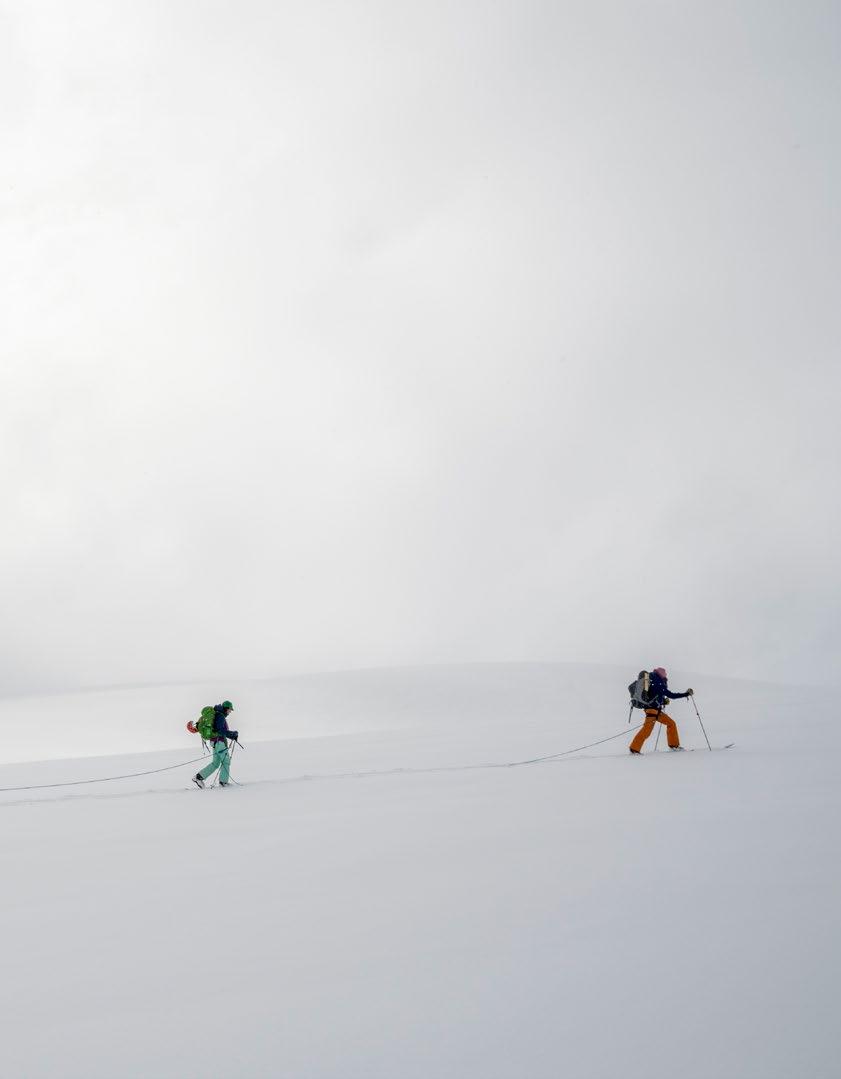
29
KENNAN HARVEY
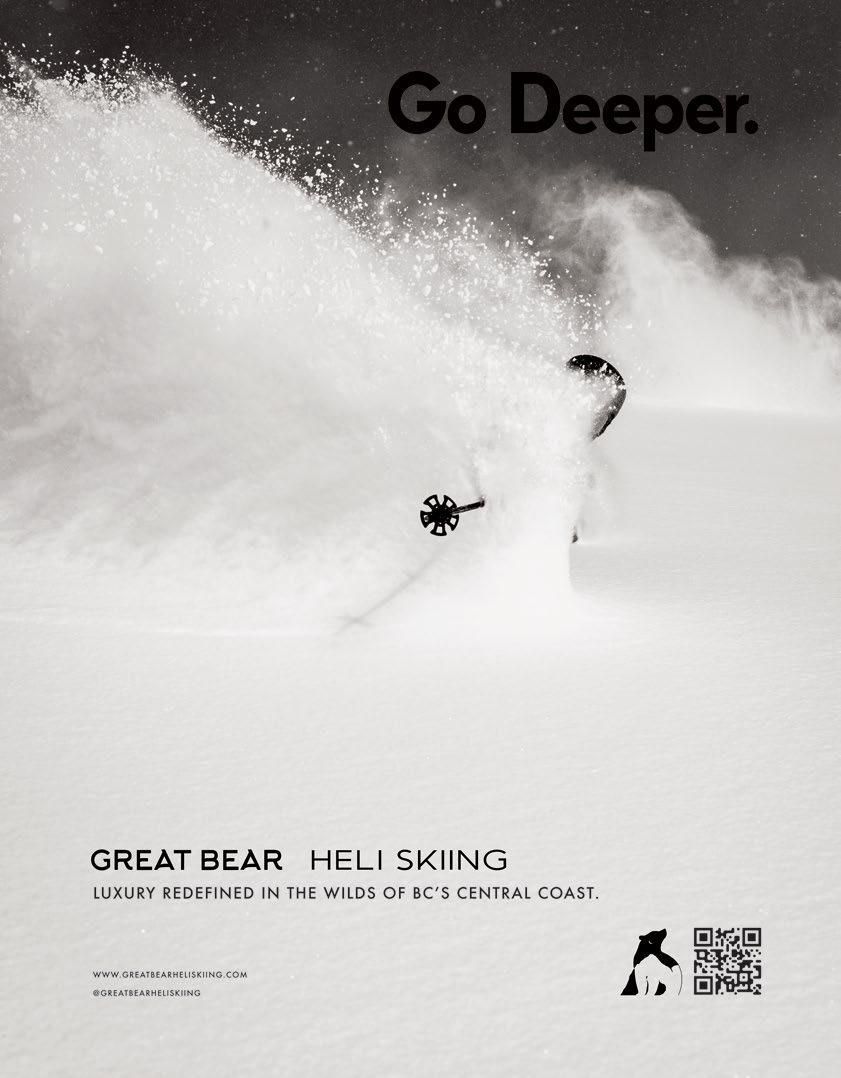
icefalls surrounding us. I suppress a shiver, knowing they could break off at any second. Rather than the usual switchbacks, our guide ascends straight up the col, breaking trail through thigh-deep powder at what feels like a breakneck speed. There is no stopping until we’re at the top. I’m winded from the steep ascent and fast pace, and grateful for the tedious hours on the stairmaster in the preceding months. (Knowing ahead of time I would be the only Easterner, my best training motivator was my fear of not being able to keep up.)
It’s white and windy at the top. The flat light gives us the unique sensation of feeling blind even with our eyes open. Slope angle and terrain features become invisible; discerning crevasses, moats (vertical walls of ice that drop off) or even cliff edges is nearly impossible.
Our guides rope together. Blindly snowplowing at a crawl, they lurch awkwardly down the slope. The rest of the group remains untethered, with strict instructions to stay safely within the guides’ tracks. Skiing downhill in zero visibility is difficult enough without being connected to one another by rope.
We come to an abrupt halt when our guide stops suddenly. He starts probing with his pole. I squint ahead, trying to see what he’s worried about, but all I can see is white, with no differentiation between where the snow ends and the fog begins. With one thrust, his ski pole goes down. Deep. He quickly scrambles back up toward us, yelling something I can’t hear over the howling wind. I’m not sure what he’s found, but it doesn’t seem inviting. We all frantically sidestep up the hill we’ve just descended, and our guides pull out their
GPS units, pointing in different directions. I have complete faith in them, and the thought of what could happen without a guide sends a quiver down my spine. They come to a decision and we press on, making it safely to our final hut without further incident.
We traverse a huge frozen mountain lake, cross a creek in ski boots, don skins to slog up steep moraines, then boot-pack up rocky slopes before ascending the crevasse-riddled glacier…

Our last day treats us to a potpourri of challenges as we make the 1,100-metre descent. We start with a giant natural halfpipe, with high steep walls on either side that could easily avalanche down into the main chute. Luckily a sun crust forms a bomb-proof ice layer, reminiscent of conditions east of the Rockies—except it’s littered with death cookies. The balls of ice, formed from avalanche debris or falling cornices, range in size from a fist to a St. Bernard, and the consequences of hitting them vary from losing your balance to a serious injury. The challenge only increases once the clouds roll in and the death cookies become invisible in the flat light.

31
LEFT The Peyto Glacier ice cave, which has since collapsed due to rising global temperatures. NELSON P. ROCHA. RIGHT Icefall from Mount Rhondda onto the Wapta Icefields. KENNAN HARVEY
We barely have a moment to catch our breath before it’s time for the next obstacle: a series of (mostly) frozen waterfalls with a hard-as-rock crust. It should be old hat for this Eastern skier, but the uneven terrain, rolling over boulders in a narrow chute, scattered with holes of running water, poses an intimidating challenge. We inch down one by one; I’m starting to miss the uphill slogs. The razorsharp focus of forced precision-skiing with a heavy pack atop tired muscles is exhausting in its own way.
Although on clear, sunny days the Wapta can appear deceptively friendly and easily accessible, it can be extremely hazardous. Risks include avalanches, crevasses, rapid changes in weather and sudden, long-lasting whiteouts making navigation extremely difficult. Unless skiers have extensive ski mountaineering experience including whiteout-navigation proficiency and crevasse and avalanche rescue skills, professional guides are necessary. Many guiding companies with Association of Canadian Mountain Guide (ACMG) certification are based out of the Banff/Canmore area. I used OnTop Mountaineering: www.ontopmountaineering.com.
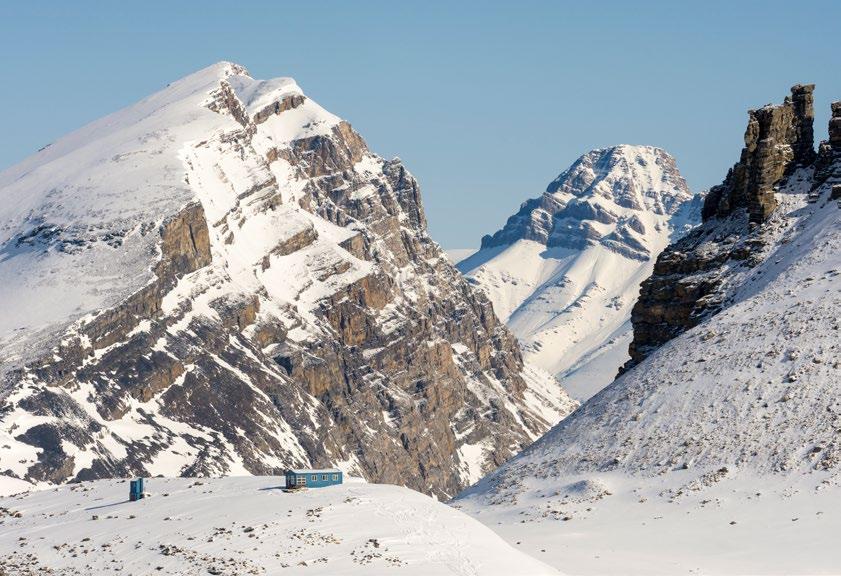
We emerge from the chute to find ourselves back at the parking lot. I look behind me, and all I can see is a hill of thick trees. There is no hint of the grandeur of the magnificent Wapta Icefields looming far above and behind. I see the cars whizzing by on the highway, not even sparing a glance. But perhaps that’s for the best. Some places are best left hidden and unspoiled.
Preparing for a mountaineering traverse is different from the usual squat-heavy routine appropriate for resort skiing. I used a program from Uphill Athlete, a virtual platform that focuses on preparation for ski traverses, mountaineering and trail running. While strength and stability workouts were definitely a component, the primary focus was building an aerobic fitness through heart rate-based workouts. Multiple groups and programs on the site are targeted toward ski mountaineering; to prepare for the trip, I joined the Female Uphill Athlete Training Group: www.uphillathlete.com.
32
It’s white and windy at the top. The flat light gives us the unique sensation of feeling blind even with our eyes open.
The Peyto Hut, the first of four huts in the trek, each operated by The Alpine Club of Canada. KENNAN HARVEY






Winter is coming. But the savings are here already! Book by December 8, 2023. PanoramaResort.com/MountainLife24 BOOK EARLY. LIFT TICKETS FOR LODGING GUESTS STAY & SAVE! See website for terms & conditions.



















SKIING FOR LIFE
Holly Blefgen’s relentless evangelism of the telemark turn
words
:: Allison Kennedy Davies
Ski Telemark celebrates its 40th anniversary this spring, and the driving force behind this travelling telemark ski school is Holly Blefgen, along with her partner Steve Kahn. If you’ve frequented Ontario ski clubs in the past few decades, you’ve probably seen Holly and Steve set up near the base lodge in their Subaru with the Ski Telemark-emblazoned roof box. Holly’s mission is to share her love of the sport with anyone and everyone who wants to learn, and whether you spend five minutes or 50 talking with Holly, it’s obvious she’s passionate about the pursuit of free-heel freedom. So passionate she’s made it her life’s work.
Ski Telemark was born when Blefgen, then in her late 20s, had an epiphany about her existing career path. After years conducting research at Sunnybrook Medical Centre’s Trauma Unit and the Addiction Research Foundation, Blefgen decided to make a sharp turn and instead follow her heart into the ski industry.
She had discovered telemark skiing a few years back, while studying kinesiology at the University of Guelph. The chain of events began during an alpine ski lesson, when a student slammed into her, causing a slow, twisting fall. The extent of her knee injury left the surgeon telling her she might never ski again. “I was 24 years old, and I had spent years teaching myself to ski,” recalls Blefgen. “I just looked at the surgeon and said, ‘I don’t know if I can live with that.’”
 JOHN DRYDEN
JOHN DRYDEN
Determined to stay on two planks and on snow, Blefgen began to cross-country ski, often in the backcountry. One morning she woke up at the Bow Hut in Banff National park after a four-foot snowfall, and found herself wondering if her nordic skis were up to the task. Another group set out before her, laying picture-perfect lines with graceful technique. When she asked what they were doing, the answer was telemark. “I was so blown away,” recalls Blefgen. “I thought, I may not be able to alpine ski, but I am going to learn to telemark.”
Soon afterward she met Kahn, at the time a cross-country ski instructor, and the pair focused on learning to telemark. They chased their passion to Mad River Glen in Vermont where Dickie Hall, a legend in the sport, was teaching a telemark clinic. After several days on the mountain, Hall asked Blefgen what was under her gaiters and was amazed to find she was skiing on cross-country boots. He gave her a spare pair of telemark boots with a steel shank that allowed no lateral movement. The difference was night and day.
Meeting telemark skiers accomplished in the sport made Blefgen realize the potential for growth. Back home, she and Kahn signed up for the first Ontario telemark course offered by the Canadian Association of Nordic Ski Instructors. They passed the course, which then gave them the tools they needed to start teaching others. But where?
At this point, telemark wasn’t something seen on Ontario resort slopes. But after watching the classic video Freedom of the Heels,
35 ATHLETE PROFILE
a Karhu production documenting a successful mobile ski school in Europe, she was inspired. She pitched General Motors, leveraging her years of presentation skills, then got a date with the board of directors at Osler Bluff Ski Club to demonstrate telemark on the slopes. It all came together. General Motors backed the mobile ski school and Osler agreed to let Blefgen and her team of instructors teach there. “We set three or four dates and there were lineups for lessons,” recalls Blefgen. “We had about 30 pairs of boots and skis and we’d literally give people an hour of instruction and an hour to play. We just rolled people over. It was so amazing—that energy. It was the thrill of learning something new and the benefit was that it helped their overall alpine skiing.”
Blefgen. “Telemark, because of the equipment, seems to have fewer injury outcomes. There’s less weight on your legs and with a free heel there’s less torque. We get all kinds of people coming to us who want to stay on snow but are struggling with alpine injuries.”
Whether migrating to telemark out of curiosity or necessity, many stay for the challenging technique. “In telemark, it’s you doing the skiing. It’s you mastering the technique. It’s much less reliant on the equipment,” says Blefgen. “People like it because there’s so much to be learned. You need balance and coordination. You’re working your whole body. You need fine motor control and independent leg action. If you pull all of that together, a lightbulb goes off and you’re hooked. It’s very attractive to people who want to be masters at their craft.”
Outside of their renowned mobile ski school, Blefgen and Kahn’s passion led them to co-found Telemark Ski Canada, a nonprofit organization and sanctioning body for Canadian telemark racing that manages the athlete selection process and events for the international FIS circuit. Blefgen was also president of Telemark Canada beginning in 1986, and she and Kahn organized a board of directors and built the criteria for Canada’s national telemark team.

Today, Blefgen, Kahn and their mobile Ski Telemark school are still sharing that energy. Throughout the winter, Ski Telemark moves around to a long list of Ontario resorts. Lessons are booked in advance on the Ski Telemark website, and participants are outfitted with state-of-the-art skis and boots. Blefgen and Kahn spend almost every day on snow from 9 a.m. until the last lift and they wouldn’t have it any other way.
Blefgen calls telemark “skiing for life”—both because of its forgiving nature on the knees and the time it takes a new skier to truly master the telemark turn. “We want you to stay on snow,” says
It’s no surprise that, early in 2023, the Canadian Ski Hall of Fame and Museum recognized her as one of the “12 Women Who Pioneered Snowsports In Canada,” and this November will officially induct her to the Hall of Fame, saying, “Skiers up and down the Niagara Escarpment know Holly Blefgen as the woman who taught them how to have fun skiing again.”
Chatting with Blefgen about her lifelong dedication to this niche sport, her enthusiasm is palpable—and unflappable. Ski Telemark is set to celebrate its upcoming 40-year anniversary at Sun Peaks this March, aiming to bring together the nationwide telemark community Blefgen has played no small part in building.

36
”You need balance and coordination. You’re working your whole body. You need fine motor control and independent leg action. If you pull all of that together, a light bulb goes off and you’re hooked.”
LEFT The 1986 Ski Telemark team following the spring Telefest race at Devil’s Glen Country Club. RIGHT Blefgen with partner Steven Kahn. COURTESY HOLLY BLEFGEN
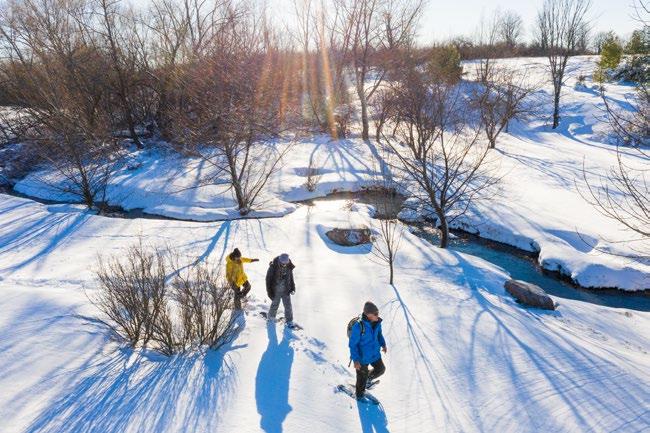
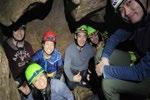

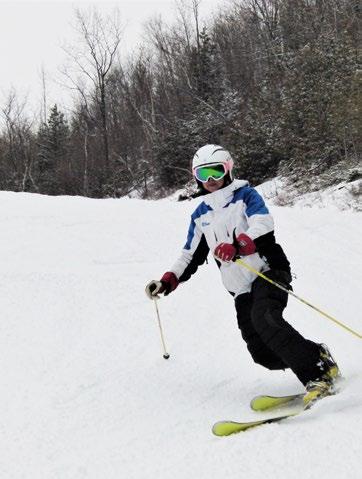


705.606.0867 freespirittours.ca 25 years of fun! Providing tours in Southern Georgian Bay • Caving • Hike & Wine Tasting • Wild Edibles Walk • Group Activities • Snowshoe & Wine Tasting • Shoe & Brew Tours Professional Instruction NEW Step-in Equipment Rentals SERVICES every Hour on the Hour 9am - 3pm FREE-HEEL FRIDAYS TO REGISTER, PRE-BOOK visit: www.skitelemark.ca skitele@eagle.ca 905-797-1074 EVERY FRIDAY MT. ST. LOUIS MOONSTONE January 12 - March 8, 2024 New Patients Welcome 186 Erie St Suite 202, Collingwood Phone: (705) 445-2470 eriestreetdental.com | RELAXED | ROMANTIC | POLISHED | OUTDOORS|
For parents with a passion for the outdoors, introducing our children to the places and pursuits we love often begins before they take their first steps. Tucking them tightly into canoes, sleds, backpacks and trailers we hit the trail, hoping to sow within them the values we cherish and to cultivate a lifelong appreciation that exceeds even our own.
As our kids grow, the results of our efforts slowly unfurl: they ski circles around us, pedal past us on the inside corner, pack their own dry bags, plot solo backcountry adventures. Somewhere between toddling and independence, a thoughtfulness and introspection develops. And, when we’re lucky, a bit of gratitude and altruism follows.
We’re proud to welcome these emerging outdoor voices to Mountain Life with Fresh Air, a department dedicated to empowering local youth, giving the next generation a space to share their unique perspective. –Ed.
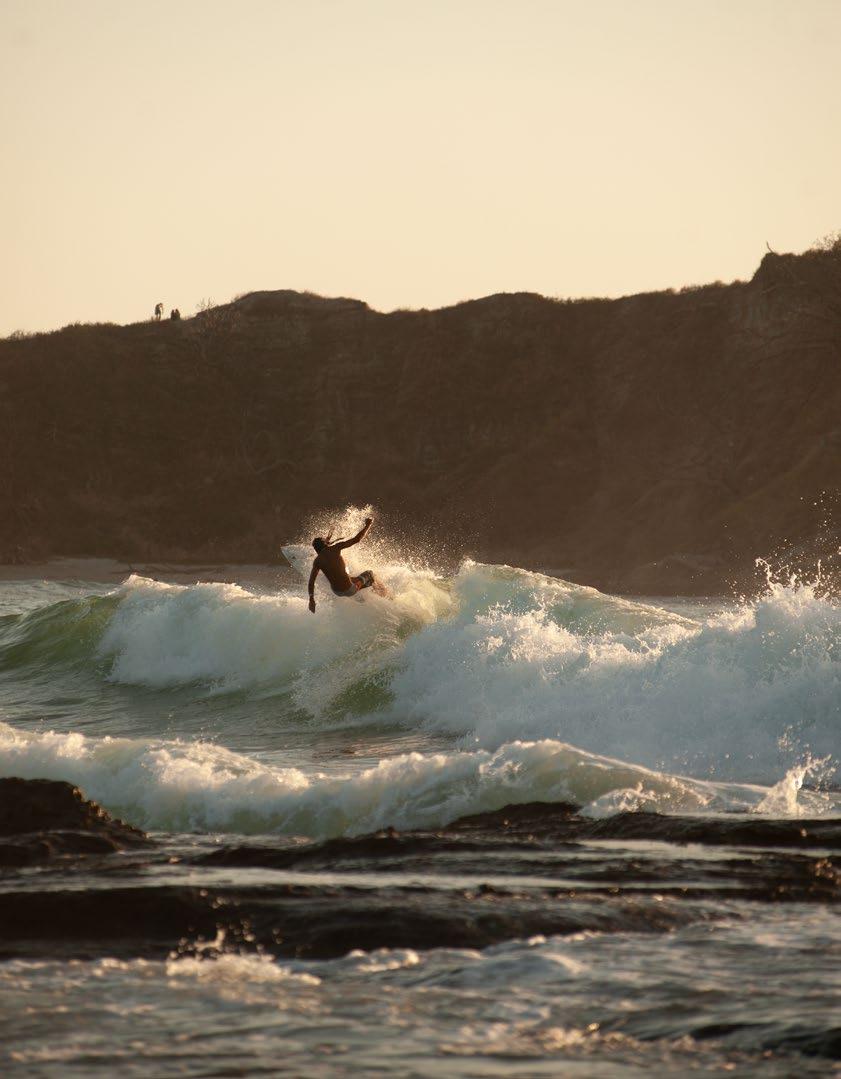
38 FRESH AIR
When we allow it to, the ocean carries us. It is powerful and fierce, yet it holds us with softness and grace.
Ocean As Teacher
Learning to surrender on the waves of Nosara
words :: Noa Hawthorn Harris
photos :: Glen Harris
There is no feeling quite like catching your first smooth, unbroken wave. I spent the first half of our class working on the small foamy wave close to shore, frustrated with my inability to just ride the wave. My instructor called from the lineup, reminding me to relax and ease into it. I became aware of the fact that I was fighting the ocean’s rhythm, falling off my board before even trying to trust the swell. I glided into the next wave, breathing with the ocean, mindful of my body, my balance and my strength. I caught it! My first green wave of many and my first lesson in working with the ocean, not against it. Those 15 seconds riding the wave seemed to last forever. In that long moment, I fell in love with the power of being present on my surfboard and surrendering to the rise and fall of the ocean.
When you surf, you are disconnected from the rest of the world, forced to move at the speed of Mother Nature. The waves will not speed up or slow down for you; you must move with them. When we allow it to, the ocean carries us. It is powerful and fierce, yet it holds us with softness and grace. There is an exhilarating but also meditative feeling that comes with becoming one with the ocean and the waves.
When I step into the ocean and get on my surfboard, I learn more about the world and myself. And each time I return to Costa Rica with my family, I find myself reenergized. The ocean sets off a bright and

vibrant spark inside me, and I see it in the people around me, too.
The ocean is a safe space for my brother and I, a place that has always connected us, where we can be our authentic selves. One night under a full moon, when the sky was bright orange, we lay in the ocean, being held by the salt water. Later, we danced in the waves. My brother was beaming. I loved seeing him in that state of bliss.
We surf for freedom, balance, joy, presence and grounding. Surfing fuels our life. The ocean becomes our home and the waves become our breath. The ocean takes all our worries and fears and washes them away. They are taken deep down into Mother Nature and transformed into something beautiful. Being in the ocean grounds us back into nature and our bodies.
Learning to surf was the greatest gift little me ever could’ve asked for. Throughout my life, I will carry the lessons that surfing has taught me. I have found so much joy and grounding from being a surfer and I share that feeling with all the surfers around me. I wish for everyone to experience the ocean through a surfboard and to find the same love, peace and joy that it brought me and my family.
My instructors at Nosara Surf School taught me how to be brave, strong and graceful in the waves. I may have been one of the youngest people out there, but I was a surfer, and that’s all that mattered.
39
Noa Hawthorn Harris is a Grade 12 student at Georgian Bay Community School.


Looking for
Who Want to Have the Best Winter Ever! If you or someone you know is looking for employment that offers... FREE skiing and snowboarding | 50% off attractions tickets 30% off shopping including cool brands like Burton & The North Face 40% off select food and beverage | Accommodation discounts | Referral bonuses | Tuition assistance and more We’re Hiring for Winter Teams Now! For a full list of current job openings and more information, visit: BlueMountain.ca/Jobs | BlueMountain.ca/WhyBlue We’re Hiring
We’re
Friendly Team Players
RIDING RH DES

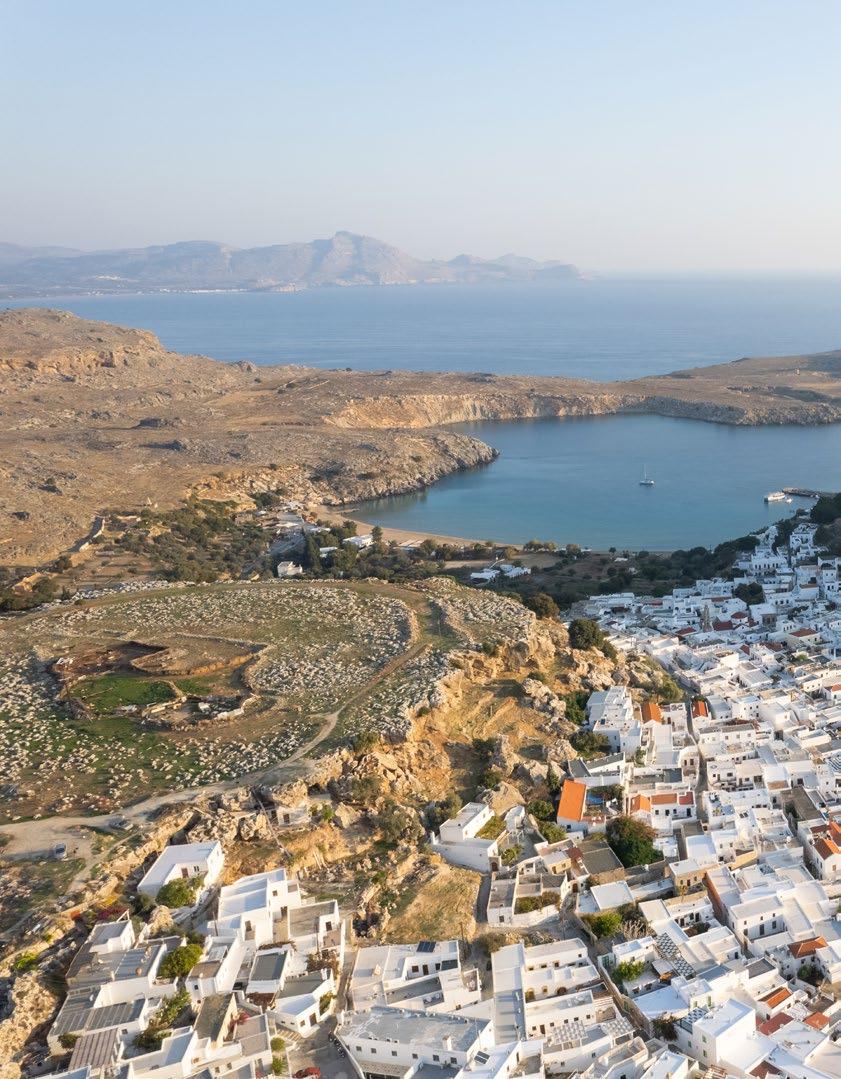 words & photos :: Colin Field
words & photos :: Colin Field
The first day on the Greek island of Rhodes kicked our butts. Leaving that morning, our Airbnb was 56 kilometres away in the town of Lindos, but that seemed easy. We could do that in a heartbeat. And the beauty of bike touring is that we could do whatever we wanted en route. We could skip onto singletrack if it looked like the right direction, hop back on the road when we wanted and stop for a swim in the Aegean Sea if the desire hit us. So when we discovered some World War II bunkers off the side of a tiny farm track, we had to check them out. We’d covered 25 km so far, nearly half way. We had time. We spent an hour exploring the ruins, vowing to learn more once we had some Wi-Fi.

My son’s fascination with history is one of the things that brought us to Greece. The litany of ancient sites around here is endless and fascinating. World War II relics seem impressive to a 12-year-old, but the amount of stuff we’d already seen had nearly saturated us with historical information. We’d ridden past the
Acropolis in Athens and the Panathenaic Stadium and had visited the prison of Socrates. Gods and humans had battled it out for millenia here, leaving an endless amount for us to learn.
Of course what no one told us (we didn’t know who to ask!) is that the road to Lindos doesn’t start ascending until about the 26 km mark. And from there it goes up, up and up. In fact it goes up to 250 metres, not once but twice. So our afternoon ride was much different than the one in the morning. Throw in two flat tires (with naught but a mini pump!) and the afternoon turned into a fully Homeric epic. We tested our endurance, our patience and our relationships. The passing kilometres slowed to a crawl and we earned each and every metre as we pedaled upwards in bottom gear. We had a rule not to travel at night, but were running out of light. We were forced to do the last leg into Lindos at dusk.
Arriving in that town was blissful. And what a beautiful place it was. Situated on the hillside, this lovely little whitewashed town overlooks the Aegean Sea and comes complete with its own ancient acropolis. It’s a labyrinth of cobbled walkways that twist and turn up and down the hillside between homes and businesses. In November it’s quaint and peaceful, and the corner store owner told us it is the best time to come.
“All the tourists have finally gone home,” he confessed.
43
The whole endeavor had started innocently enough. The post-Covid world was opening again. We wanted to get away for November. But where?
“Have you ever wanted to go to Greece?” my wife asked one night. “I’ve never not wanted to go to Greece,” I responded.
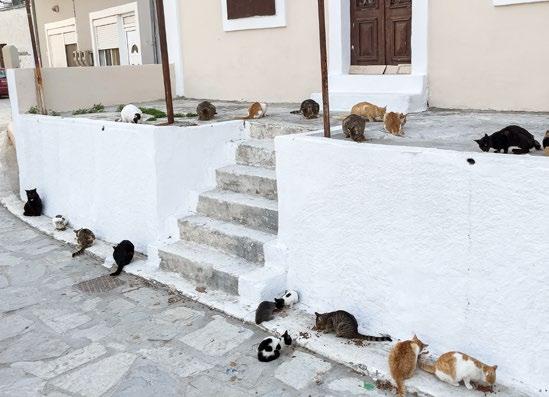
“Should we go bike touring?”
“Yes.”
And that was it. We booked flights for early November and the trip was on. Now what about the rest of the details?
Suddenly there were a lot of them. We begged, borrowed and bought everything we could to make it happen: bikes, panniers, bike bags and more. And what we couldn’t figure out we learned on the way. Like did you know it’s cheaper to check a bike with Air Canada than it is to check a suitcase? It’s only 50 bucks to check a bike, $75 for a suitcase.
But did you also know it’s $300 per bike to fly with Lufthansa? Neither did we ‘til it was too late.
Was Greece a good place to bike tour? No amount of research really seemed to answer that question. And what about the weather? What was it like in November? Popular opinion predicted rain.

What we didn’t realize before booking flights and planning the trip is that the mainland is mountainous. Like really mountainous. So in a scramble to avoid too much climbing we headed to the Dodecanese island of Rhodes. An 18-hour ferry from Athens to Rhodes took us through the Aegean Sea; motoring overnight near the coastline of Turkey into quaint Greek ports and attempting to sleep in airplane seats was an experience we’ll not soon forget.
Arriving in Rhodes, we learned this is where the Colossus of Rhodes once stood, a 33-metre statue of the sun god Helios. It was erected in 280 BC and was one of the seven wonders of the ancient world. Made of iron, stone and bronze, it collapsed during an earthquake in 226 BC.
We spent a few idyllic days in Lindos doing day trips; we rode the roads in Rhodes down to Lardos Beach and swam in the sea repeatedly. Water temps were perfect. Leaving Lindos, we traveled back to the site of the bunkers in Afandou and detoured over to Olive Tree Farm. A lovely Swiss woman named Emma ran the place and she toured us around her olive grove, explaining why they taste so terrible off the tree and what makes virgin olive oil, virgin olive oil (the olives can never touch the ground and they have to be pressed within 24 hours of harvest).
We tested our endurance, our patience and our relationships. The passing kilometres slowed to a crawl and we earned each and every metre as we pedaled upwards in bottom gear.
She had young farm hands staying with her, including a couple from England who were riding their bicycles from London to New Zealand. They’d covered 4,000 km to get here and were six months into a multi-year adventure. Our son listened to their stories with wide-eyed enthusiasm; we could see the ideas percolating in his young mind.
Of course no trip to Greece is complete without sampling the food. And what a delight. The ongoing joke amongst the family was, “What kind of food are you going to eat in Greece? Olive it!”
And we did. The other joke is that it isn’t Greek salad in Greece, it’s just salad. Most of the places we went simply dropped a full square of feta right on top, too.
Leaving Olive Tree Farm, we spoke with Emma about the route across the island to Soroni. She said the hill wouldn’t be bad.
44










PH: Aaron Mccartney 68 Runs | 6,500 Top Elevation | 2,465ft Vertical | 1,800+ Resort Acres | 13ft Avg. of Purcell Powder HEART
OF THE ROCKIES
Not as bad as the ride to Lindos. I still have no idea if she was lying, putting on a brave face or simply delaying our dread. Because she was dead wrong. That. Road. Punished. Us.

We rode up for nine kilometres. The road went up, with 400 metres of elevation gain, for nine whole kilometres. With all our gear on board. We were in bottom gear the whole way. We stopped in the mountain town of Psinthos where we refueled under the shade of an ancient olive tree in the town square. Coca-Cola, spanakopita and kreatópita (a kind of meat pie—yum!) fueled our next stint. It was clear the road continued up from here. How much further can it go

up? After our 9-km slog, we still had three more to go, with another 175 metres of elevation gain. It was unquestionably the hardest day of the entire trip. It was a herculean effort that tested us all.
But you know what’s rad? When you ride up for 12 km, if you’re truly doing the right thing, the world will bring you a sign. And you know what that sign was? A 12-km, 575-metre descent on the other side. It was one of the best rides of my life.
Although we suffered on that initial ride up to Lindos—and later with that 12-km uphill—it jogged my memory, reminding me why I’d spent so many months bike touring in my twenties. I absolutely love it. Riding a bicycle around a foreign country with all your gear is my idea of a good time. You notice everything. The size of the curbs and how different they are from home. And the smells. Riding through olive groves, we’d get wafts of sage and lavender that reminded us of roasted potatoes. Every once in a while we’d get a whiff of feta, only to round a bend and be stunned to see a pack of goats staring at us curiously. We discovered and watched olive presses in action as families brought in their yearly harvest from trees their ancestors planted. It’s an incredible way to travel.

46
The ongoing joke amongst the family was, “What kind of food are you going to eat in Greece? Olive it!”
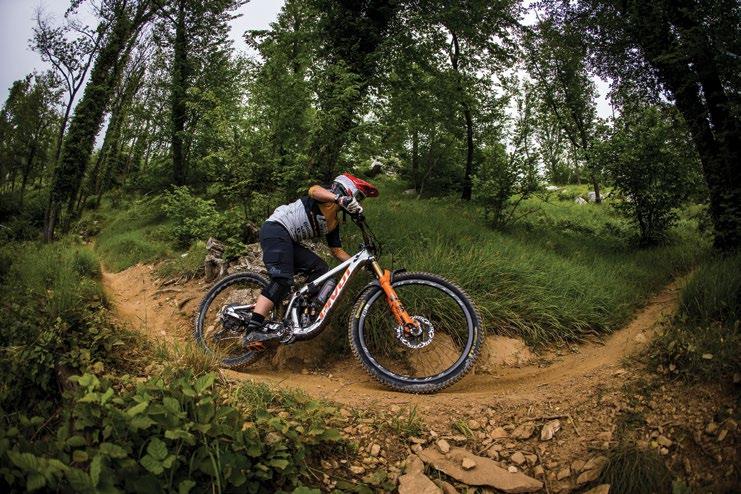

BIKE SALES & CUSTOM BUILDS WE DO BIKES... ALL YEAR LONG 246-A HURONTARIO ST. INFO@SUMMITSOCIALHOUSE.COM 705 888 0707 GRAVEL, ROAD & MTB FROM AND MORE... COMMUTER, FAMILY & EBIKES FROM AND MORE... Del Grams Real Estate Advisor 416-996-5492 instagram.com/sellwithdel delgrams.evrealestate.com del.grams@evrealestate.com SERVING SOUTHERN GEORGIAN BAY
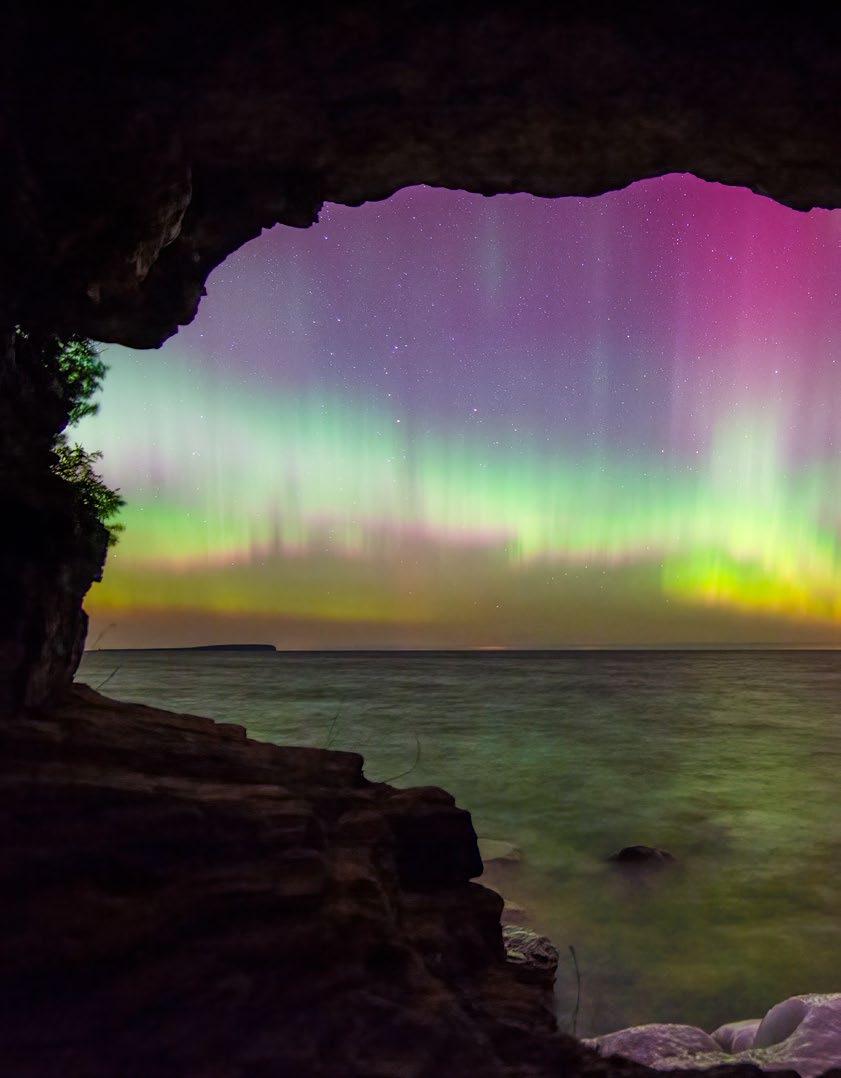
48 PHOTOGRAPHER SPOTLIGHT
Northern Saugeen Bruce Peninsula. ISO 1600, F 2.8, 25 seconds.
Capturing Light In Darkness

Esme Batten’s luminous images of the night sky
words :: Kristin Schnelten
Esme Batten swears astrophotography isn’t difficult—like most things in life, it’s a matter of patience and practice. But she does admit those endless hours fumbling with a camera and tripod in the dark can lead to obsession.
“My longest stint was eight nights in a row. I work full time, so that was a bit much,” she says with a laugh. “Now I typically get out a couple times a month, on moonless nights under clear skies.”
Living in a designated Dark Sky Preserve on the Saugeen Bruce Peninsula, Batten’s home is perfectly situated for nighttime photography sessions. But her idyllic backyard wasn’t her initial inspiration.

During an extended visit in the UK to care for family, Batten was having trouble sleeping. Already a photography enthusiast focusing on birds and wildlife, giving nighttime photography a try seemed a natural progression.
Through social media she made a friend who worked in astrophotography and showed her the ropes. “And for the next six months I went across the UK, photographing the night sky. I really fell in love with it then.”
Following her return to Ontario, she explored her surroundings after dark. “The ecology is unbelievable, and the landscapes are spectacular. I spend a lot of time at Cabot Head and Dyer’s Bay,” she says. “I’m really grateful for the Bruce Trail, as it enables me to walk much of the escarpment and capture its beauty. I feel super-fortunate to live on the peninsula; the world is my oyster as far as places to go.”
As a biologist with the Nature Conservancy of Canada, Batten says, “I had always thought of nature as its individual pieces, but I see it differently now. Now when I see a landscape, pictures emerge in my brain and I think, Wow, what if the Milky Way were behind it, or what if it were morning and surrounded by a mist?”
“It’s a meditative thing for me,” Batten reflects. “Night photography is a time when you really get to be peaceful and calm. No one is messaging you or expecting anything from you. You can sit there with your own thoughts; you can look out at nature and be awed by it.”
“It all comes from a respect for the natural world, wanting to share that with others and helping them feel connected to it as well,” she adds. “I’ve met a lot of amazing friends who are into photography, and it’s been great. I’ve spent lots of time outside with people I really love, going on adventures, trying to capture the beauty of Ontario. It’s really enriched my life in ways I couldn’t have pictured.”
Find more of Esme’s work on Instagram @esme_batten.
49

50
Comet NEOWISE . Dorcas Bay, Saugeen Bruce Peninsula. ISO 1250, F 2.8, 10 seconds.


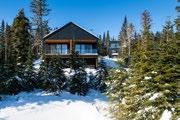


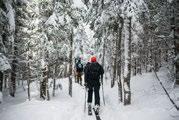
lemassif.com | @lemassif Carving tracks that’ll last forever Book your stay Boasting the highest vertical drop east of the Canadian Rockies, Le Massif’s playground is a winter wonderland for everyone. Combo Lodging & Ski Starting at $230 per night * *Price is per person based on a two-person occupancy *Specific terms and conditions do apply Details at lemassif com


*HST extra. Savings up to $99 based on two adult 8-hour lift ticket purchased at a representative window rate of $129 compared to one Double Down purchased at $159.Tickets valid for the 23/24 season only and limit of two Double Down per purchaser. Blackout dates: December 23-31, 2024 and February 17-19, 2024. Save up to $99* on two fully transferable 8-hour lift tickets. $159* Double Down on Winter Until November 30

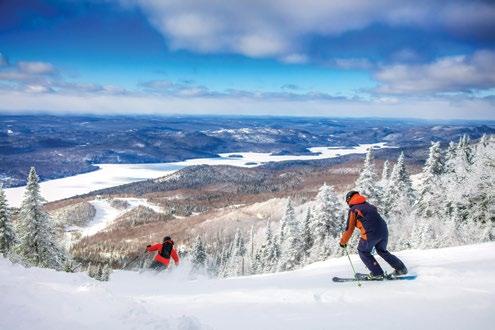

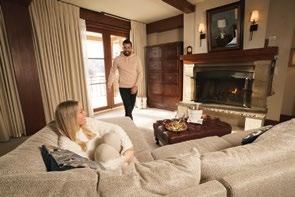
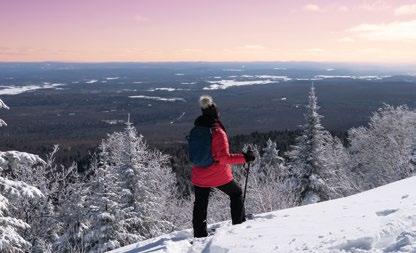


Stories from the Ground part 2: The Telltale Plink
words :: Ned Morgan
 illustration :: Lani Imre
illustration :: Lani Imre
Last fall I found an ancient spear point in the creek behind my house, but I had to break it first.
Let me explain.
Working in a shallow section of the creek in my yard—which was slowly being undermined by water flow—I scooped a shovel full of mud and rocks and chucked it to the far bank. I heard a Plink!, went to investigate and found the bottom half of a point, caked in mud but identifiable mainly thanks to its stem (the square protuberance at the base). I scrubbed it with warm water and an old toothbrush to find an almost flawless, finely tooled matte-black surface, with the interior
(revealed by the break) a deeper, gleaming black.
The next day I showed the piece to my father and he pointed out that, judging from the jagged edge, it was broken recently—by me, of course, when I threw it onto the rocks of the creek bank. Late that afternoon I searched the bank and, to my relief and joy, found the top half, which fit like a puzzle piece. While I was regretful that I broke it, I reflected that if not for the telltale Plink! of the point hitting a rock—which sounded like glass breaking—it might have remained obscured in the mud.
I’d seen similar points in museums, so I knew I’d found something very old. But I needed professional eyes on it. I sent photos to archeologist Peter Storck, curator emeritus with the Royal Ontario Museum and a contributor to Mountain Life
BACKYARD
“I would say it was made about 3,000 years ago,” Storck wrote in an email. “The point is very large and looks well-made. It looks to have been made of chert.”
Chert is a silica mineral, formed in limestone. Indigenous peoples across North America used it for thousands of years to make various types of projectile points.
“Judging from its size, I would say it was probably used as a spear point rather than an arrowhead,” Storck continued. “It’s a bit hard to identify since the base appears to be damaged, which is the most diagnostic part of most projectile points. But it looks like a type that was made during the late Archaic period or perhaps the early part of the Woodland period. People at the time were huntergatherers living in an environment that was very similar to that of today in terms of vegetation and climate.”
Just the word “Archaic”—an archeological term to denote an extended time period from 10,000 to 3,000 years ago—evokes in me a multi-millennium awe. Even 3,000 years ago is mists-of-time old compared to the 1840s, when my ancestors settled in Ontario.
I needed to know more. Through a friend, I discovered that an archaeologist named Claire Freisenhausen, principal investigator and senior partner with CRM Lab Archaeological Service, lived about a ten-minute drive away. She showed up to my creek one bright October day with her husband, Jeremy Burke (senior partner at
CRM), and an Australian colleague, Eden Alley-Porter. The three crawled around the leaf-strewn creek bank, examining tree roots and depressions in the mud, turning over rocks, parting weeds and willow branches, but found no other artifacts.

After I expressed my regret at breaking the point, Jeremy consoled me by recounting an incident when he was a student many years ago on an archaeological dig in Jordan when he accidentally drove a shovel blade into an ancient skull. “The sound it made was unbelievable,” he added. I felt a little better knowing that even pro archaeologists also occasionally damage artifacts as they find them.
After the informal site investigation was complete, I gave Claire the point to study at her leisure. “When I shared the provenience—the location of the findspot—with my colleagues, it caused quite a bit of excitement for a few reasons,” she later reported back. “While we all agreed that it represents ‘a generic broadpoint’ dating to the Late Archaic, the stone material it was manufactured from is not a local chert. It may in fact originate from Ohio or even Quebec. This means there was either direct contact with the people who lived in the area where the chert was originally sourced, or that the chert that it was made from—or even the point itself—travelled a great distance to finally land in a creek bed in Meaford. In any case, it represents contact between people in the past which we were not previously aware of.”
This was news. Suddenly my backyard felt a lot less ordinary. Claire added: “This particular broadpoint was discovered in an interesting place, but unfortunately its location doesn’t tell us much in this case because it is ‘out of context.’ In archaeological terms, this means that the artifact is not specifically related to a particular past human occupation, but is essentially ‘floating in space’; we refer to this sort of scenario as an ‘isolated findspot.’ It is absolutely possible that it represents a hunter’s missed throw, and it could also have been a hit that got away.”
Regardless of the (pretty much unknowable) circumstances of its original loss, I find myself fixated a little absurdly on what the point can’t tell us. I wish it could play back its saga in a backwards time-lapse film from the moment I found it to the moment the hunter threw it and finally to the chert quarry in Ohio or Quebec. (This imaginary film would include thousands of years of darkness when the point was buried in the mud—but as long as I could fast-forward that section, it would be a gripping watch.)
Soon it became clear to me that the spear point needed to be housed somewhere other than my desk drawer. But I’ll admit that I developed an attachment to it. I kept it in a small cloth bag and guarded it. Each day I went back to it, re-examining every millimetre of the tool work. It felt talismanic in my hand.
But I knew I couldn’t hold onto it forever.
I found it on the ancestral lands of the Saugeen Ojibway Nation
55
I wish it could play back its saga in a backwards time-lapse film from the moment I found it to the moment the hunter threw it and finally to the chert quarry in Ohio or Quebec.
(SON) and the consensus among friends, family and archeologists was that it should be repatriated to them.
Through her work, Claire Freisenhausen knew fellow archeologist Robert Martin, archaeology coordinator with the SON, and she facilitated the return of the point to its rightful custodians in December 2022. Coincidentally, the SON were then beginning to develop an artifact display facility at their Environment Office in Wiarton.
days of monitoring, we came upon two axe heads and two projectile points.”

Clearly, archeology can be under our noses if we know where to look (or even if we don’t) but given the pace of development in Ontario today, countless undiscovered sites may be under threat of being paved over.
“Our traditional territory consists of 40 municipalities,” said Caley, “and their number one mission is development—so there is a lot of land, and a lot of potential for artifacts being lost forever.”
As part of this effort the SON has enlisted archaeological monitors to work alongside Martin, helping out on digs and field walks and also liaising with settlers, museums or SON members who find artifacts or wish to repatriate collections. I talked to one such monitor, Caley Patrick Nadjiwon Doran, a member of the Chippewas of Nawash Unceded First Nation (part of the SON), who is also an interpretive guide at Cape Croker Park.
As he describes it, field work is much more than unearthing the past. “In the morning we put our asemake down, our tobacco. We say a little prayer to Mother Earth and share our intentions. Like, ‘Today we’re out doing archeology and we’re looking to discover some of our past and some of our ancestors, and we’re sharing love and respect with the earth.’ And often, shortly after that, we’ll come upon something that’s really significant. And when we find something, we hold that artifact or that thing of cultural significance in our hands to allow the ancestors to speak to us in a way.”
Talking to Caley, I realize archeology is everywhere—even in well-trodden places. “We were walking a field a couple of months ago in Port Elgin doing what’s called a ‘pedestrian survey,’” he said. “This field had been ploughed for more than 120 years and during our two
In spite of these threats, Caley’s work has led him to discover new connections with his ancestors. Recently he was on another pedestrian survey in a forest near the banks of the Rocky Saugeen River: “I saw this rock pile and I knew it was something. And it turns out it was probably a foundation for a sweat lodge, about 150 or 200 years old. I did some research and our last hereditary chief— Kegadonce, Charles Jones—used to winter in Markdale and hunt. His children went to school at a settler schoolhouse, close by where I came upon the rocks. So it’s my personal belief that this was our last hereditary chief’s winter lodge.”
When I mention to Caley that the spear point I found means a lot to me even though the people who made it aren’t my ancestors, his response surprises me: “Your ancestors were indigenous to somewhere. If you could take yourself back through your bloodline or your DNA, I’m sure that 3,000 years ago, they were probably hunting, gathering, farming or fishing somewhere else in the world. Everyone’s family bloodline goes to somewhere on the earth where their ancestors were more connected with the earth. So I think that’s something everyone can feel.”
I hope this is true, but many of us have inherited (consciously or not) the outlook of Canada’s 19th- and 20th-century European settlers who approached land as little more than a resource to be exploited, either for subsistence or profit. But if we can find a balance and recognize that our landscape is a shared legacy, we may find a different kind of wealth.
56
”Everyone’s family bloodline goes to somewhere on the earth where their ancestors were more connected with the earth.”
The point, recently unearthed from its multi-millennium home. NED MORGAN



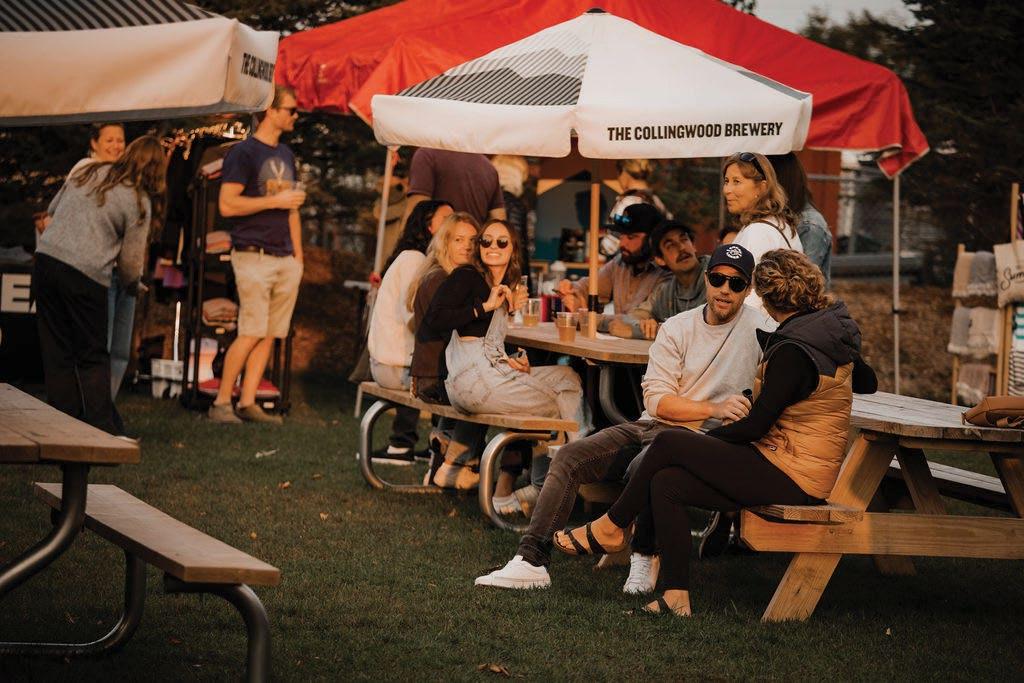
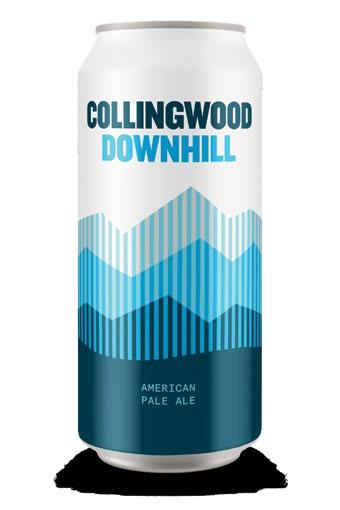
LIVE YOUR BEST LIFE IN GREY HIGHLANDS Simon Dearden Realtor 1 (519) 379-2551 simon@greyhighlandshomes.com greyhighlandshomes.com 21 Main Street East, Markdale OPEN DAILY | Taproom + Patio + Bottle Shop 10
Fleming Drive, Collingwood, ON | 705.444.2337 | info@thecollingwoodbrewery.com
Sandford
PHOTOGRAPHER: SHAY SWITZER
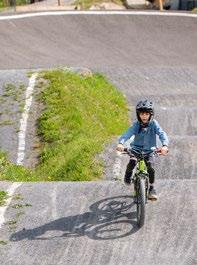




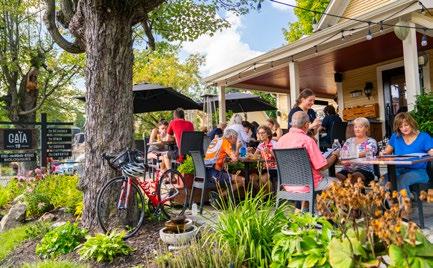

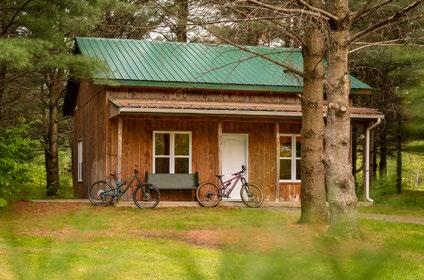

58 WHEEL WELL
Bromont is for Bikers
Savouring berms and brews in the rolling hills of southern Quebec
words :: Kristin Schnelten
Queueing under the demo tent at the Parc des Sommets Pavilion, oversized helmet lopsided atop my head, rolled-up hiking pants revealing hand-knit rainbow socks sagging down to my ancient brown hikers, I am a caricature of my inner monologue: I do not belong here.
Sponsored riders decked out in proper gear fit me for a pedalassist e-bike, briefing me on its operation: Basically, push this button and go. Um, go?
I am not fast, nor even comfortable, on a mountain bike. My falls are frequent and comical—each a slow-motion Oh! I’m going to catch myself! No, maybe not! Yes, I’ve got this! Oh, crap, no I don’t! careening crash to the side, a result of riding too. Damn. Slow.
So the e-bike. It’s a bit intimidating.
But the e-bike. It’s heaven.
On my own hardtail, with zero confidence and an even lower fitness level, I walk up hills others sprint. Stops are frequent, as I push my bike over roots and rocks. Lagging far behind, I desperately seek a shortcut to the truck. (Just, you know, making sure the beer is still cold.)
But with the pedal-assist, I am… Well, damn it, I’m a mountain biker. I make it to the top of the hill in one shot—still huffing and puffing with the motor on its lowest setting, but I make it. Reaching the start of a technical section, I have just enough speed to pick my way through without pausing. I am, for the first time in a decade, ahead of my son, who delivers helpful pointers and shouts of encouragement. When we arrive at the junction, it’s me who begs please, just please for one more lap. Do I really have to return this thing?
Because this mountain-biking stuff—it’s fun, did you know?
the resort (Bromont, montagne d’expériences), which adds 50 km of enduro and downhill biking to the mix. Gravel and leisure bike trails zip through and around town, and roadies flock to the area for its winding sideroads peppered with quaint wineries and B&Bs.
At the Centre National de Cyclisme de Bromont, the province’s only velodrome is surrounded by pump tracks, a BMX park, more cross-country MTB trails and an impressive series of terrifying dirt jumps, tucked into the towering trees.
As expected in a little Quebec town embracing pedallers of every persuasion, the joie de vivre is inescapable. In free parking lots dotted with vanlifers and daytrippers, après circles spontaneously form. Stacks of bikes surround downtown restaurants and outdoor cafes. Backbone, the ego-free bouldering gym, is a mecca for not only climbers, but cyclists and tourists who dig hippie hammocks and steamed dumplings.
Every morning we pull into a new lot with another pavilion, staffed with summer students selling trail passes to visitors (lucky locals are free) and offering additional markups to our already circled-and-starred maps. We choose our trails, biking or hiking, intermittently meeting back at the truck for snacks—treats stashed away from our pre-ride stop at La boulangerie-pâtisserie Canaël, whose decadent croque monsieur is an oozing detonation of savoury croissant perfection worthy of an eight-hour drive on its own.
Back on the trail, we find our favourites: The serpentining Fruit Loops makes us hoot with every criss-cross, Sarahescence to Farfadet offers a sweet overlook at its zenith and Humus keeps us on our toes with its long, dynamic descent.
Having such a lightning-bolt moment in Bromont is fitting. It’s difficult to not fall in love with riding here, in this welcoming town that’s positively saturated with laid-back bike vibes.
With 150 kilometres of trails spread across five networks in more than 300 hectares, the Parc des Sommets is a cornerstone of the stellar biking experience. And its creation story is one of hope and community: When real estate development loomed, the citizens of Bromont rallied together. After years of work, raising awareness about environmental protection and sustainable tourism (and more than $8 million), residents worked with the Ville de Bromont, the Nature Conservancy of Canada and other organizations to put a stop to the development, creating instead a park for all to enjoy.
That Parc des Sommets trail system, which welcomes mountain biking, hiking and horseback riding, along with cross-country skiing, snowshoeing and fat biking in the winter, is adjacent to the trails at
Après-après, we take a short brewery tour. In an area filled with microbrasseries, we have a dizzying list of options but opt for one night at Brouemont for hit-the-spot pub fare and a four-pack for tomorrow afternoon, then another full evening at La Knowlton Co., where we settle into their movie-set-worthy patio and become instant friends with the locals. Because a holiday isn’t a holiday without trying to squeeze in all the tourist stops, we even manage to visit the Musée du chocolat (where one of us might have purchased their weight in baking fèves) and Domaine Muscadine elk farm, stocking our cooler for the trip home.
Everywhere we turn—restaurants and shops, trailheads and summits, even our dog-friendly cabin at Domaine Yamaska—we’re greeted with ear-to-ear grins and warm “Isn’t this place just the best? We’re so lucky to live here!” conversations. The community that worked so hard to protect its greenspace wants visitors to enjoy it. The locals love bikers. The trail organizations and town work together, pulling out all the stops to build infrastructure and maintain accessible, hella-fun trails. When Sunday morning arrives, it’s difficult to pack up and leave this town, where each of us feels like we truly belong.
59
• • •
FIRST ROW, LEFT TO RIGHT KEVIN BRUNELLE, KRISTIN SCHNELTEN (X2); SECOND ROW KRISTIN SCHNELTEN; THIRD ROW KRISTIN SCHNELTEN, TOURISME BROMONT, ALLYSON GALLANT; FOURTH ROW KRISTIN SCHNELTEN.







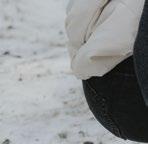






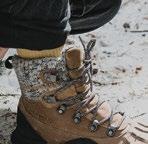






705.446.1234 470 First St, Collingwood | RENTALS . HUGE SELECTION . SALES . SERVICE TAKING FAT BIKING TO THE NEXT LEVEL! Stay warm and confident this winter in the Siren 4 Thermo. merrell.ca
But What Can I Do?
words :: Leslie Anthony
Yesterday, on the heels of June 2023 being the hottest June in recorded history, the news brimmed with advisories that July would similarly go down as not only the hottest ever known, but the hottest in 120,000 years.
If this seems an abstraction given the almost certain lack of record-keeping by our Cro-Magnon ancestors, don’t worry—scientists have many ways of understanding past global temperatures, from lakebed pollen samples to glacier ice cores. And as for current realtime measurements, the source is unassailable—GISTEMP, NASA’s global temperature analysis, draws on data collected by thousands of weather and research stations on every continent, as well as by ships and ocean buoys. So, while it’s a coin-toss whether UN Secretary General António Guterres’s warning that we’ve surpassed global warming to enter an era of “global boiling” is hyperbole or prophecy, the world indeed passed through the eye of a very hot needle this summer, one that will also see record global acreage of wildfire with attendant loss of property, crops, wildlife and habitat. No surprise that alarm bells are ringing in the UN. Unfortunately, but also no surprise, no one who should be heeding those alarms is doing so.
The problem is that the bells have been ringing too long. Decades in fact: According to NASA, the 10 hottest years on record occurred since 2010. Yet by the divine dictates of Shifting Baseline Syndrome, we’ve barely noticed because the hottest 20 years on record have occurred since 2000. Along with them have come climate chaos and unprecedented impacts.
It’s clear we’re losing the chance to make meaningful progress on the climate crisis we’ve created and, as that slips through our hands, on the intertwined biodiversity crisis we’re also responsible for. Forget global boiling, we’ve entered an era of observable global unwinding of the planet’s life support systems, accompanied by crushing anxiety and paralysis. Enough that many find themselves retreating to that ol’ human failsafe—thinking there’s nothing they can do individually to fix an existential crisis, and so doing nothing. What such thinking misses is that the only way to ultimately affect the global systemic change needed to solve these problems is a critical mass of individuals doing something—even if it’s only caring enough to talk about it.
The most frequent thing I hear when speaking about this topic is But what can I do? Fortunately, when it comes to personal actions to address the climate and biodiversity crises, there’s plenty we can all do.

61 BIOPHILIAC
Cooling a boiling planet, one micro-decision at a time
Wildfire smoke blankets a flatwater paddle. LESLIE ANTHONY
Buy Less
This one’s obvious. We live in a culture of stuff, much of which we don’t need and some of which can be repaired or repurposed. Because the world is so interconnected, and everything we make, ship, sell a buy has a knock-on effect elsewhere, buying less is literally the lowest-hanging fruit.
Drive Less
If each of us drove just 10 per cent less, gains would be tremendous. As an example, in 2017, Americans drove trillions of kilometres and produced ~1,100 million metric tons of CO2—a fifth of the country’s total emissions. A mere 10 per cent cut represents 110 million metric tons of CO2—the same as taking 28 coal-fired power plants offline for a year. Because more than a third of all car trips are less than three kilometres, the effect of walking, biking or taking public transport adds up quickly—as does combining errands to avoid unnecessary trips.
Lawn Less
Chemicals, fertilizers and endless work to create a carpet of usually invasive and wildlife-unfriendly grass. What’s with our lawn fixation? At the very least, do we need so much? Especially in cottage country, where shoreline habitat has been given over to lawns. Let shoreline be shoreline and you’ll be shocked by what moves in.
Buy Better
You lessen environmental impact when you purchase quality items that last longer, or food grown/packaged closer to home. Buying organic helps, and those few extra cents will save some butterflies. Avoid buying food that contains ingredients with large-scale impacts such as palm oil—which is akin to eating a rainforest and all its inhabitants.
You don’t have to eliminate meat, eggs and dairy, but cutting down and paying attention to less-impactive types and sources isn’t hard. And there are plenty of other choices in every grocery store aisle. Two types of parchment paper? Buy the kind that can be composted. Buy unbleached toilet paper and paper towels, preferably made of bamboo.
Ziploc-style bags have hundreds of uses, but did you know they can be washed (even in a dishwasher) and used for years? Dry detergent strips have the same amount of soap as liquid laundry detergent without the waste of water, suspension chemicals and a plastic container.
Bottled water? Just don’t.
Be Active
Volunteer to plant pollinator gardens in your community, join invasive species groups or beach/lake/ditch cleanups, all of which benefit wildlife. Find ways to discuss climate and biodiversity issues with friends, family and community members. Advocate to FireSmart your community, fight for greenspaces and wildlife corridors, and sign petitions (these actually work, as they’re verifiable and politicians respond to numbers).
Plant Mo’ Better
Not everyone lives somewhere they can plant a garden, but if you do it’s never a bad idea—even an herb box on an apartment balcony is micro-wildlife habitat. And growing even a fraction of your own food lessens your footprint. There are showy plants you can eat, and edible plants that put on a show. With ornamental gardens, stick to native plants and avoid invasive species.
Share Nature
Take a family walk so parents can teach children and vice versa. I make a point of show-and-telling one (OK, maybe three) amazing plant or animal facts on a walk, aware that it was reading or hearing these from a mentor that first piqued my interest in nature—and got me caring enough to want to do something.
Drive Slower
Folks on Ontario’s roads seem in more of a hurry than ever. That’s not good for wildlife, and the carnage is rising. We might not be able to lessen the volume of traffic, but if we slowed down and paid attention on cottage-country commutes, things would be better for a lot of creatures. As an example, as of mid-July, Peterborough’s Ontario Turtle Conservation Centre was receiving an average of almost 50 roadinjured turtles a week. If you can’t avoid a turtle, you’re driving too fast.
62



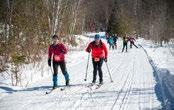




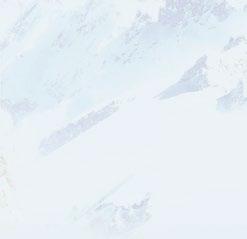











THE BEAVER FREEZER WINTER MARATHON SATURDAY, MARCH 09, 2024. SAULT STE. MARIE, ONTARIO RUN, BIKE OR SKI 42KM, 22KM OR 14KM www.beaverfreezer.com November 23-25, 2023 Village Conference Centre, Blue Mountain Resort MOUNTAIN MOVIE FEST Visit mountainmoviefest.ca for tickets, trailers and more info. Proceeds go to Giveaways from local businesses including Mountain Life Media Special ticket price for Blue Mountain pass holders « « Salomon Quality Ski Time Film Tour Warren Miller Entertainment ALL TIME Teton Gravity Research Legend Has It @mountainmoviefest Mountain Life Media is a proud supporter of
THE PICOT TEAM .COM
COLLINGWOOD / BLUE MOUNTAINS
Imagine owning a home that combines the natural beauty of the area with all the amenities that only a 4-Season destination can offer.
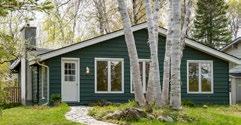
FEATURED LISTINGS



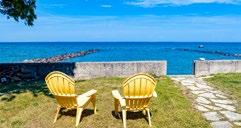

Chestnut Park’s® affiliation with Christie’s International Real Estate opens doors to global connections with over 1,200 Christie’s International Real Estate Affiliate offices in 46 countries and 32,000 Real Estate Professionals.

Buying or Selling Real Estate? With Chestnut Park® we have what it takes to handle every detail of your transaction so you don’t have to.
TRUST

www.ThePicotTeam.com picot@rogers.com
| C: 705.444.3452 *REALTORS®
INTEGRITY | KNOWLEDGE
DISCRETION
|
|
MLS®40473297 | $24,000/Ski Season 119 Martin Grove, The Blue Mountains MLS®40473833 | $1,900,000 141 Bayview Avenue, The Blue Mountains MLS®40461443 | $30,000/Ski Season 904-277 Jozo Weider Blvd, The Blue Mountains MLS®40447005 | $1,085,000 16 Thomas Drive, Collingwood MLS®40432125 | $2,888,000 104 Hoggard Court, The Blue Mountains MLS®40423409 | $749,000 209864 Highway 26, The Blue Mountains Wherever YOU ARE IN YOUR JOURNEY, WE’LL GET YOU INTO THIS LIFESTYLE Chestnut Park® Real Estate Limited, Brokerage | 393 First Street, Suite 100, Collingwood, ON, L9Y 1B3 Barb Picot* Ron Picot* Elizabeth Jilon* 2022 #1 TEAM SOUTHERN GEORGIAN BAY/ GREY BRUCE/SIMCOE
Go Out Anyway
Cold outside. Gold inside with the Omni-Heat™ Infinity collection.

Windfall has partnered with RBC Royal Bank to offer an exclusive 3.99%, fixed-rate mortgage to help you secure your dream home. Explore extensive trails, hit the slopes, and sail on the shimmering waters of Georgian Bay. You’ll also enjoy luxurious spa-like amenities in your own backyard, exclusively for the residents of Windfall. This is everything you want Blue Mountain living to be.






GEORGIAN COMMUNITIES Another project developed by: WindfallatBlue.com SEMIS BUNGALOWS TWO STOREYS
Windfall
us today to learn more. 3.99% FIXED RATE MORTGAGE * LIMITED TIME EXCLUSIVE OFFER *Conditions Apply.
This is Your
Contact
For the Love of the Chalet
Enchantment and joy in a carefully designed holiday home

words and photos :: Kristin Schnelten
Tightly curled architectural drawings, content in their sealed tube for forty years, fight with persistence against their unfurling on the side table. Using cutting boards borrowed from the kitchen and her infinite patience, Joan weights and flattens individual sheets, running her hands over the fine lines and flawless lettering. “I can’t believe I did all of this,” she whispers.
Precise and hand-drawn—created with only pencil, pen and ruler—the drawings are indeed a lost art. But the research and planning behind them are fresh in Joan’s mind. Completed in 1981 for the remodelling of her family’s Collingwood ski chalet, every magnified detail jogs a memory.

67 MOUNTAIN HOME
At the time of the remodel, Joan was operating her own architectural design studio in Toronto while raising three young children with her husband, Ron. The family spent many years travelling to Collingwood for ski weekends at rented homes before purchasing a small chalet at the base of a new ski club.

With two tiny bedrooms and one infinitesimal sleeping loft, space was a premium. Adding a room or two was a necessity, and Joan began investigating an architectural style she became “absolutely enchanted” with while skiing in the Alps: the Swiss mountain chalet. Armed with a thick, hardcover black-and-white publication detailing historic chalet construction, Joan began her initial sketches.
When Ron was by chance called to Switzerland on business, Joan joined, spending the holiday chatting with homeowners, meeting with architects and eventually visiting lumber yards. Now with first-hand knowledge of the artisanbuilt Alpine homes with their signature low-pitched roofs and wide overhangs, she returned to Ontario and completed her stacks of drawings. Twice.
“I was designing the house from a romantic standpoint, and trying to save money at the same time,” she remembers. “But the builder had a better perspective, and asked me to redraw the plans. I had only a week to complete them, but somehow I made it happen.”

68
JULIET TANAS
“The builder… asked me to redraw the plans. I had only a week to complete them, but somehow I made it happen.”
The Southern Georgian Bay Lifestyle

A solid 3+ bedroom, red brick home, centrally located to school and library. Finished attic space (could be converted to primary suite) and two floor with 2-piece bathroom in the coach house. So many possibilities.

Situated at the end of a quiet country road, Burr Briar Farm is made up of a mixture of open pasture, mature woods and park-like grounds. A charming log cabin built in 2003 using reclaimed century logs has been recently renovated. A must see, come walk this beautiful property!!!

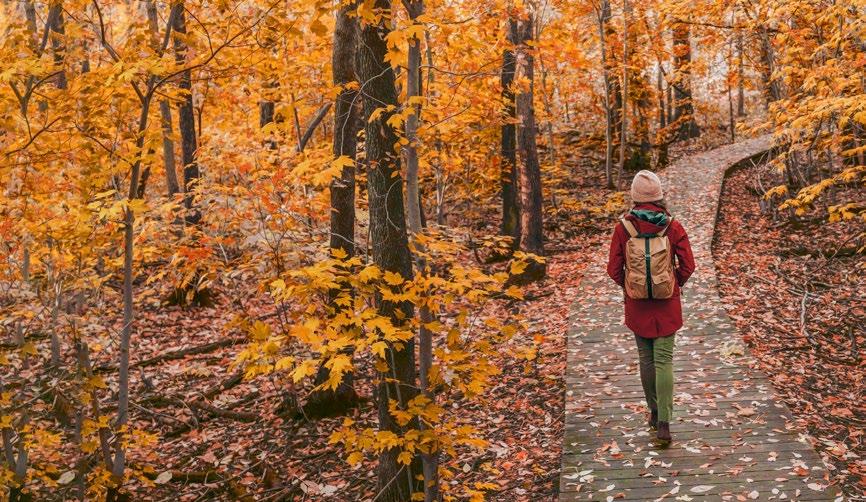
56 NAPIER STREET THORNBURY ON |
$1,499,000
A PIECE OF PARADISE ON 100 ACRES IN THE ROLLING COUNTRYSIDE OF MEAFORD |
56 Napier Street East, Thornbury | MLS® 40457660
$1,395,000
Brendan Thomson Sales Representative D: 705.606.1270 btrealestate2@gmail.com brendanthomson.com Chestnut Park® Real Estate Limited, Brokerage 393 First Street Suite 100, Collingwood L9Y 1B3 O: 705-445-5454 | F: 705-445-5457 collingwood@chestnutpark.com
557733 4th Concession Rd N | MLS® 40468604
Looking To Buy Or Sell? Contact Me Today!
Undertaking the construction project—notched into the side of a ski hill, disrupting multiple underground streams—was anything but straightforward. The builder first removed a section of the old chalet, resting it atop beams in a side yard, where half of it slid from its perch, toppling to the ground. And there was the minor issue of a collapsed wall along the way. But by the time ski season began, their expanded chalet was buttoned up against the icy Georgian Bay winds.
The process of completing the interior was a slow one, as the couple finished sections when budget and time allowed. With her connections through the design studio, Joan had access to the construction materials and hardware she needed to recreate what she’d seen across the pond: scrolled supports, carved railings,
The sole piece of exterior trim showing its age is the hand-painted lettering under the eaves. Joan is wistful when she reads the words aloud: “It says, ‘The wide-open spaces of our longing,’ which it was.”


intricate tilework and European hardware. But much of her inspiration came straight from that one hefty tome. Pointing to her colourful, hand-painted design that rims the walls of the lofted main space, she confesses, “I just copied it from the book!”
From that open room and its exposed beams, through the large kitchen-dining area, six bedrooms and basement spa, Joan found space for curved niches, tiny nooks and functional crannies, each filled with either necessities of life or curated mementoes from the couple’s world travels, all interwoven with family photos and reminders of mountain holidays.
Around every corner are pictures and reminders of her husband. “It was really our project together, building this chalet,” she says. In the gardens, for which Joan took inspiration from the natural curves and shapes of the property, she created a stone pathway in the outline of the constellation Leo. “Because we’re both Leos—and we both do wild and crazy things,” she laughs.
The layered landscaping is as well-maintained as the house, which has seen continual updates and upgrades over the years. The sole piece of exterior trim showing its age is the hand-painted lettering under the eaves. Joan is wistful when she reads the words aloud: “It says, ‘The wide-open spaces of our longing,’ which it was.”
Mountain homes in Switzerland are designed and built to withstand the tests of time, intended to house generations. When she welcomed her first great-grandchild earlier this year, Joan introduced a fourth generation to her own chalet. She has retired from skiing, so these days it’s the younger family members spending winter weekends at the hill, creating new memories. For Joan, much of her fondness for the space is rooted in its beginning, as she says, “It was a joy, just an absolute joy, to build.”
70










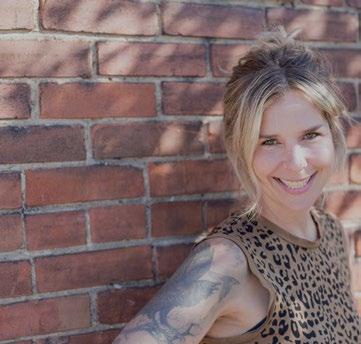

Your home is my business Let me help you find your dream home. Ellen Kalis Sales Representative 416-527-2896 ellenkalis@gmail.com ellenkalisrealty “Working with Ellen is a breath of fresh air” – Alex J.
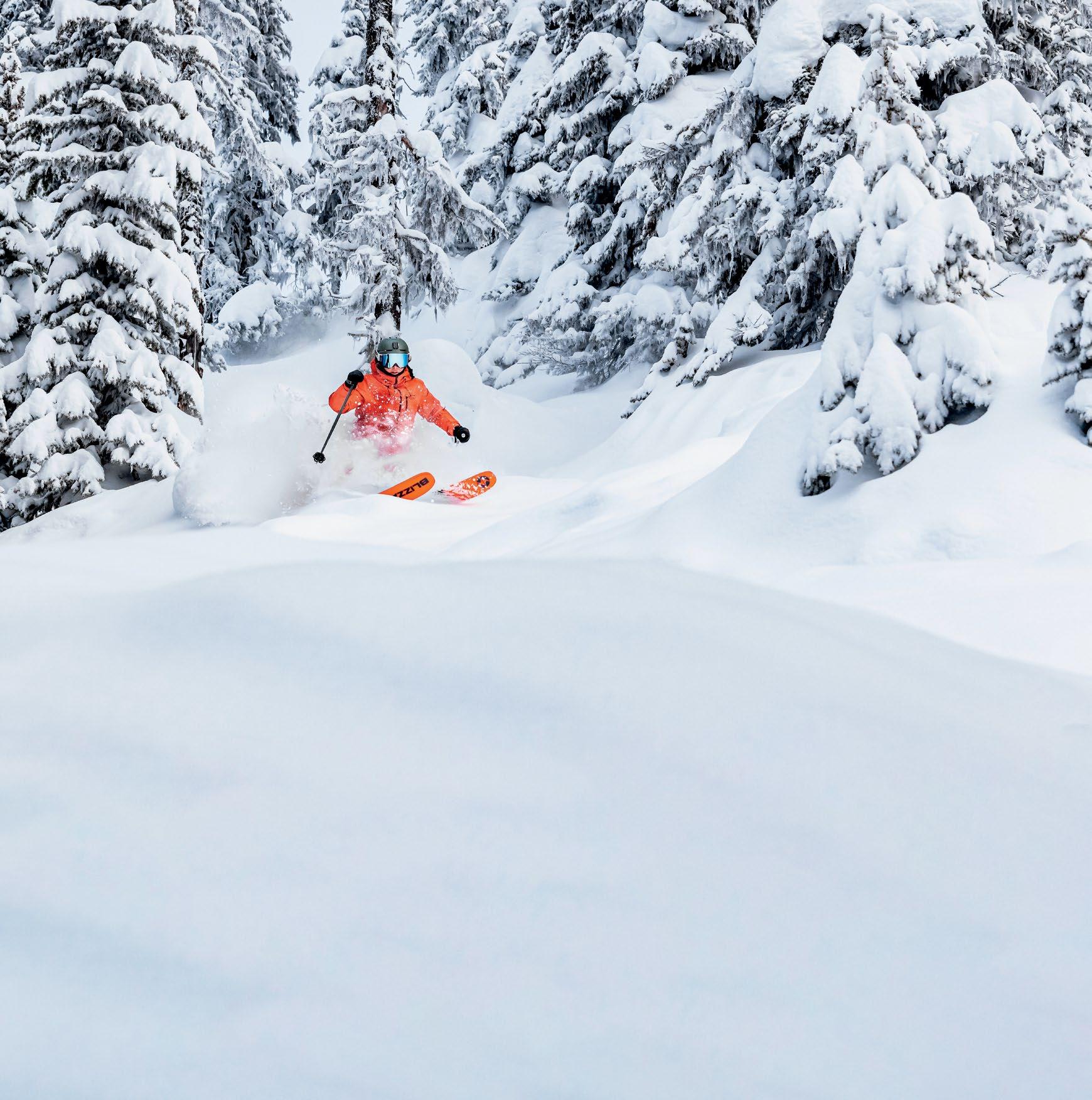



BOOK BY NOV. 15 SAVE UP TO 40% OFF P : H y w e l W i l l i a m s
When the skiing lifestyle meets friends and family, it’s always good times.

Switzerland MARCH, 2023
Bettmeralp,
We share your passion for perfect ski days.
ELANSPORTS.COM
The Freedom of Darkness
Finding refuge and resilience between the long shadows of a full moon
I wait until dark falls around the house and step outside. The sky is clear. I place my skis, nordic boards with an edge, down on the crust and crane my neck to look up. The surface of the full moon looks like ice. I’m going skiing by moonlight.

Hours before, the sun dipped below the horizon behind me. Now the only light is from the moon. It casts the sun’s reflection through the bare branches of the trees. The forest brightens. Against the snow, the light glows. Everything is shining. It’s like the stars have fallen out of the sky and settled on the ground around me. The conditions are perfect; I step into my bindings and push off.
To explain how I started skiing by moonlight, I have to go back to 2018. I was diagnosed with skin cancer. Mine was melanoma, the deadly kind. I have a genetic condition. My dad died from the same thing when I was young.
After my diagnosis and an operation, my doctors made it clear that I had to stay out of the sun. They didn’t mean wearing a hat, sunscreen and long sleeves was enough. I have a mutation of a specific gene, which means I don’t have the same natural protection that most people do.
My surgeon said that for me the ideal amount of UV exposure is none. That was impractical but he urged me to limit the risk where I could.
As a climber, runner, hiker, canoeist and skier, I’ve spent my life either in the wilderness or wishing I was out. My first reaction? Impossible. I couldn’t live a good life without going on adventures. I didn’t even want to imagine it.
That said, I had young kids. And while my disease would probably be dictated by genetics, staying out of the sun was the only way to increase my chances. I had to try, but how do you heal when the thing you love the most is taken?
Slowly, I started finding ways. I went running at the edges of the day when the UV light is much lower. In the winter, I could cover up. With a helmet, face mask and goggles, I could reduce my exposure while downhill skiing. The canopy in Pretty River Provincial Park provides great cover. I started on the trails in the early mornings to hike more safely. The risks weren’t zero, but they were less.
But something was still missing. To me, going out on adventures meant building my resilience. I loved responding to unexpected
74
BACKYARD
conditions. My new limitations meant I was missing a sense of freedom.
One winter night, my husband and I were sitting on the couch. The moon was bright. We turned off the lights to look out. The maple trees cast shadows like tiger stripes across the snow. “It’s almost as bright as day,” he said.

I checked the UV monitor on my phone. It was zero. And that’s when I saw it: my sense of freedom. It was waiting right outside the window.
Against the snow, the light glows. Everything is shining. It’s like the stars have fallen out of the sky and settled on the ground around me.
Now I see a full moon as a chance for adventure. I’ve refined my planning. I put every full moon in the calendar. When it’s approaching, I start tracking the weather. The best nights are clear. When the clouds and rotation of the earth align, it’s my equivalent of a powder day.
The condition of the snow doesn’t really matter. It can be choppy, smooth or hard-slogging. I don’t need to go far or fast. In fact, speed can be a problem. My depth perception isn’t great at
night. Last winter, I was on a snowmobile track. I misjudged a hill, the trees whizzed by on either side, and I had to bail into a snowbank.
It can be a little spooky when the coyotes start yipping. At first, their barking howls sounded haunting, but I knew they weren’t interested in me. I decided to rethink how I was hearing them. Now, I listen carefully and try to understand what the coyotes are on about. Are they planning something, or is it like singing? The night is their time to be social. I’m glad they have it.
And the night is my time to wander. I’ve loved moonlight skiing so much that I’m trying new things like hiking. My husband and I went one night in the spring, the canopy full. The light from the moon didn’t come through to the trail and it became an ankle-breaking situation. It was fine because we’d brought a flashlight but, so far, I’d say open fields and quiet roads are the best bet.
But I don’t mind if I try something new that doesn’t quite work. That’s the point. It’s exploring. It’s an adventure every time I go out by moonlight. I’ll keep going.
–Claire Cameron
Bestselling author Claire Cameron’s novel, The Bear, was long-listed for the 2014 Women’s Prize for Fiction and her most recent novel, The Last Neanderthal, was shortlisted for the Rogers Writers’ Trust Fiction Prize. Her writing has appeared in The New York Times, The Globe and Mail, The New Yorker and Salon
75
ILLUSTRATION BY MIA CARNEVALE
Ýeß, thìß ìß a real place

(no, we’re not kidding)



Local Deets, Cool Feats
INSIDE THE BELLY OF AN ELEPHANT: A MOTORCYCLE JOURNEY OF LOSS, LEGACY AND ULTIMATE FREEDOM
Inside the Belly of an Elephant, written by adventurer, motorcycle rider, storyteller and (full disclosure) Mountain Life co-publisher Todd Lawson, explores grief and family bonds, sharing the stories of his late brother Sean Lawson.
In his debut book, Todd pays tribute to Sean and his escapades through the wild era of ‘90s backpacking culture. Thrill-seeker, ski bum, nature lover and travel nut, Sean’s deep need for freedom pulled him around the world. Todd draws from journal entries, letters and notes from friends to recount Sean’s life journey.
Todd’s meditations on family and travel are woven throughout the book. In 1999, the two brothers embark on a motorcycle journey to explore 6,000 km and six countries in southern Africa before Sean becomes violently ill. Within days, Sean passes away from cerebral malaria, a mosquito-transmitted parasite rampant in the areas through which they journey. Todd witnesses his brother’s passing, and his desire to honour Sean’s spirit shapes the narrative.
With his life adrift, Todd meets his partner Christina—a fellow vagabond—and together they find healing in the mountains of the Andes and the rivers of the Amazon on a 44,000-km motorcycle trip from Whistler to Patagonia. Their adventure continues with a return
STRONG GIRL PUBLISHING
“Every girl deserves to see herself in sport,” says Collingwood author and athlete Molly Hurford. “As a kid, I believed that when you’re a bookworm, you can’t be an athlete. You can only be one thing. Spoiler alert! We can be any number of things. We contain multitudes,” she says.
Hurford’s new publishing company, Strong Girl Publishing, brings that attitude to a new selection of female writer-athletes, helping to amplify their voices and connect them with readers. The small business launched in early 2023, adding two new authors to its roster alongside Hurford’s popular Shred Girls book series, with two additional titles set to launch by the end of the year.
“We believe that young women athletes are perfectly positioned to share authentic, real experiences—often through fiction!—in a way that an author who hasn’t been there simply cannot,” she says. Find out more at www.stronggirlpublishing.com

to Africa almost 10 years after Sean’s passing, where they ride an incredible 23,000 km and distribute hundreds of mosquito nets to aid the fight against malaria.
Todd’s love for his brother is poured into the pages of this book. Inside the Belly of an Elephant is an ode to a too-short life well lived. www.rmbooks.com. –Kenna Ozbick

POW CANADA NEEDS YOU!
Protect Our Winters (POW) Canada is accepting applications for volunteers to lead the Collingwood chapter’s community initiatives. If you love the outdoors and are committed to turning your passion into purpose, POW Canada is looking for you. Their volunteers are working hard to broaden POW’s reach across the country and build awareness on climate action. If you’re interested in volunteering, email info@protectourwinters.ca to learn more.

77 THE BETA
POW Leadership Summit. REUBEN KRABBE
EAT LOCAL GREY BRUCE

After a tumultuous few months that nearly saw the end of Eat Local Grey Bruce, the co-operative nonprofit is back, connecting sustainable growers and makers with a hungry local community.
Ultrarunner Steve Kenny stepped in as general manager last spring, and sees the task before him and the new board of directors with a race mindset: “When you run your first marathon, you hit about kilometre 25 and think, Uh oh, we’re in trouble now You need a burst of energy right then, and that’s where we are now with Eat Local Grey Bruce. We’re bringing that fresh energy, building back relationships with producers and eaters. I’m really excited.”
Co-op members can place orders online for everything from vegetables, fruit and meat to dairy, baked items and prepared meals, with weekly pickup locations throughout the area. Learn about becoming a member at www.eatlocalgreybruce.ca
MOUNTAIN MOVIE FEST
Collingwood’s Mountain Movie Fest is one of the area’s mostanticipated ramp-ups to the ski season. Last year the festival screened three films in three nights, raising more than $2,700 for the Protect Our Winters (POW) Canada program Hot Planet, Cool Athletes, which benefits kids in our local schools.
Mountain Movie Fest 2023 will take place November 23–25 at Blue Mountain Resort. This year’s lineup includes the new Teton Gravity Research flick, Salomon’s Quality Ski Time Film Tour and the Warren Miller 75th anniversary celebration movie.
Last year, festival tickets sold out fast—three days fast. Stay tuned to their website and social media channels to keep in the loop: www.mountainmoviefest.ca and @mountainmoviefest
DESTINATION STEWARDSHIP BEAVER VALLEY
Destination Stewardship is a new term to describe the convergence of tourism and stewardship. Ideally this is where tourism’s bad outputs—overcrowding, gridlock, litter and overdevelopment, to name a few—are avoided in favour of promoting a region’s natural and cultural heritage for a more sustainable industry.
Readers of ML will know that the Beaver Valley has been relatively wellpreserved ecologically, but is under threat from development—particularly on and around the site of the former Talisman Resort. Destination Stewardship Beaver Valley (DSBV) is a group of concerned citizens looking to motivate residents, businesses and government to create a shared vision where tourism can enhance and protect, rather than
WE RUN THE BRUCE
Overcoming injuries, exhaustion and re-routes, an intrepid group of Hamilton-area runners tackled the entirety of the Bruce Trail this summer in a five-day, four-night relay from Tobermory to Niagara.
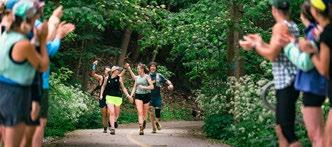
The endeavour took almost a full year to plan, including lining up generous sponsors, a roster of more than a dozen runners and local support. “There were some really badass trail-running ladies in the Collingwood community who helped with anything we needed,” says Bethany Stief, one of the event organizers.
“Initially it was just a desire to bring the community together and have a big adventure,” says Stephanie Jett, another key organizer. “But then we realized that we’re doing this epic thing and we should get our voices behind something we care about.”
The runners chose to raise funds for two organizations: The Bruce Trail Conservancy and The Barbra Schlifer Commemorative Clinic, the latter selected in light of recent assaults on Hamilton-area trails.
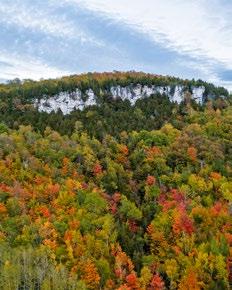
Alternating turns on the 63 legs of the trail, sometimes forfeiting sleep for 48 hours, Stief comments, “It was very stretching. But it’s how you learn about yourself, and other people. It was a very cool experience.”
To learn more and contribute to the group’s continuing fundraiser, visit www.canadahelps.org/en/pages/we-run-the-bruce
negatively impact, the region’s biosphere.
This vision begins with defining not only the desired scale of tourism, but the preferred type of visitor—i.e., those keen to discover the valley and respect its geographical character— and then marketing to them. DSBV is in the process of creating an inclusive council as well as partnering with Grey County and the aspiring UNESCO Georgian Bay Geopark in an effort to improve the stewardship of the Beaver Valley in the near future.
To learn more, visit www.facebook.com/ DestinationStewardshipBeaverValley or join the DSBV mailing list at destinationstewardshipbv@gmail.com. And find more info on the proposed Georgian Bay Geopark here: www.georgianbaygeopark.com
–Will Shelley
78
Old Baldy. JENNA KITCHINGS
EMILY FERRIS
The International Centre in Toronto
October 27 - 29, 2023



3 Days, 100+ Exhibitors, Gear, Travel, Prizes & More




80 80 GALLERY

81
If you’re gonna take a selfie, make it a damn good one. Paulo LaBerge, Kolapore Wilderness Trails. PAULO LABERGE

82 82
Paul Lachapelle in Dyer's Bay. SCOTT PARENT


83 83 Mid-winter Great Lakes ice formations. KYLE WICKS
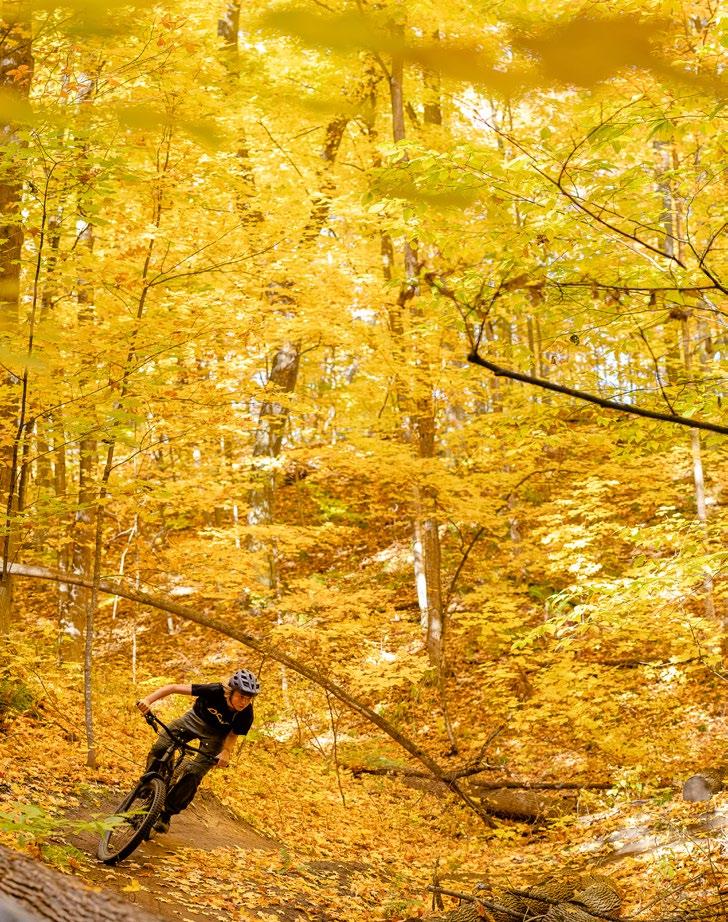
84 84
Maverick Loopstra, Mansfield Outdoor Centre. KRISTIN SCHNELTEN
A NEW ERA BEGINS

“Perfect in every sense...”
The launch of SHADOW signals a new era of performance and fit for Lange. A boot born from the darkest corners of our deepest workshops. Years in the making. Our new all-mountain showpiece highlights the quest for performance and expertise that have run through our veins right from the start. Ski better – the Shadow shines a light.

“… comfort is o the charts.”
“Finally a boot that lives up to the marketing…”


See what America’s Best Bootfitters are talking about...
lange-boots.com



 © photo : Florian Monot
© photo : Florian Monot
“Lange has reinvented the wheel…”
“…the best all around boot that I have ever
“My only complaint… I wish they’d made this boot sooner!”
“…the mechanical advantage concept works.”
“Everything about this boot
Are you Moving to Sault Ste. Marie Yet?













Dropping into the newest mountain bike trail in Sault Ste Marie, Swamp Donkey, it’s hard to find reasons not to move here. These flowing berms, jumps and drops are what mountain biking is all about. The riding here is good and only getting better.


That’s why Chris Sanger moved up here from Mississauga back in 2022.
“It was becoming too hard to get to the trails,” he recalls. “Every time I had to jump in the car and drive for 45 minutes to go ride. Here, the Hiawatha trail head is seven minutes from my house. Bellevue Valley is 20 minutes from my house.”










Not to mention, the whole town is obsessed with riding. They are literally build-


ing trails as we go to print. Flow trails, jump trails, singletrack, epic climbs, descents, pumptracks—the Soo is building something for everyone. By 2025 they’ll have about $2.5 million invested in local trails. And the scene couldn’t be friendlier.













“The cycling community here is really inclusive and supportive,” says Sanger. “I never


ADVERTISEMENT
joined a club down south. They were either too far away or they were too competitive. The cycling club here does it all and wants to support all cyclists. They host clinics, races, fundraisers and non-competitive kids programs that I never witnessed down south. The community is very strong. To give you a comparison, my wife was a part of the Wild Bettys women’s MTB club in the Milton chapter down south. On a good night, she would be riding with 25 other women. Here in the Soo, she can expect to see upwards of 60 riders on a good night. The population of Mississauga is 700,000 and SSM is 70,000.”
It’s this passion that makes the Soo a special place to live.

And don’t forget Lake Superior. The mightiest of all the Great Lakes provides endless opportunities for adventure. If you’re new to paddling sports there are amazing outfitters like Thrive Tours, Forest The Canoe and Naturally Superior Adventures to get you started. The fishing is world-class and the swim-
ming off some of the country’s most beautiful beaches can’t be beat.
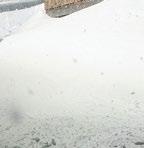
During the winter, the mass and chill of Lake Superior provides; lake effect snow is a serious thing here. Searchmont Resort gets 335 centimeters per year on average. Recently under new ownership and management, Searchmont is completely revamped. There are new accommodations, new lifts, new runs, new snow-making equipment and a whole new attitude. Last winter they were open from U.S. Thanksgiving right through to April. They hope to be open even longer in 2023/24. And their 214 vertical meters are only 30 minutes from downtown SSM.
“When I ski at Searchmont, I come back and have dinner at my own table,” says Sanger. “That never happened when I’d go to Blue. I always ate my meals on my lap while driving. Here, I can go to Searchmont, ski the whole day, come home and eat dinner at my table. It doesn’t seem like much but it does a huge amount for your state of mind and your well-being.”








If you’re ready to earn your turns, Bellevue





Valley Lodge is another incredible place to experience the thrill of backcountry skiing. If you’re the cross country type, Hiawatha Highlands and Stokely Creek Lodge are both world-class destinations.



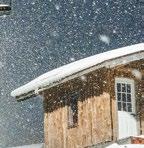
Sault Ste. Marie may have everything you’re looking for; it can easily claim the title as the outdoor adventure capital of Ontario. Whether you’re looking to hike, bike, climb, paddle or ski, it’s got it all. And with a relatively uncongested layout, getting from work to play is easy. Not to mention the deals on real estate around these parts.
“I got a house for $450,000, which would have cost me $1.5M in Mississauga,”says Sanger.
With numerous career potentials in healthcare, engineering, trades and aerospace, cheap living, great deals on real estate and a quality of life that doesn’t include sitting in traffic all day, moving to the Soo is definitely worth considering. So when are you moving?




Sponsored by Sault Ste. Marie Tourism









Thank you for 20 years! TO OUR WONDERFUL COMMUNITY AND DEDICATED PATRONS, 214 Main St • Sauble Beach • 519-422-9997 • store@jacknjillssur fshop.com SURF • SUP • KITE • WING • WAKEBOARD • SKIM • WETSUITS • FOILS • APPAREL
1. The women’s-specific fit of the MERRELL SIREN 4 THERMO MID ZIP WATERPROOF BOOT is uniquely engineered to cradle the distinct contours of female feet, providing comfort, support and stability even on the longest hikes. Now with Solarcore insulation, a lightweight material initially designed for NASA, you never have to worry about warmth. www.merrell.com // 2. With a mix of trend-forward design and protective tech, the COLUMBIA MORITZA SHIELD OMNI-HEAT insulated boots are fully waterproof and have a thermal-reflective fleece lining. www.columbiasportswear.ca // 3. In the SWANY SX-30 X-CALIBUR GLOVE, new Dyna-Flex Construction molds to your hand for a perfect fit. You can grip better and grab easier, with greater dexterity, than with any other insulated glove. The Tri-Plex Alpha Insulation System gives you 30 to 50 per cent more warmth than standard insulation and is fully waterproof and breathable. Available in men’s and women’s. www.swanycanada.com //

4. The launch of the LANGE SHADOW SKI BOOT signals a new era of performance and fit. The new all-mountain showpiece highlights the quests for performance and expertise that have run through Lange’s veins right from the start. Offering confidence and stability, the Shadow’s breakthrough dual-pivot technology harnesses extended leverage for unparalleled liveliness and drive. A bold, new liner uses Auxetic foam for a flawless connection and comfort. www.lange-boots.com // 5. Constructed with a 100 per cent recycled membrane, the JACK WOLFSKIN ALPSPITZE TOUR 3L JACKET provides complete weather protection and great mobility. Long pockets work with a pack, and an adjustable hood helps keep out the elements when you need it. Available at SAIL.

www.jack-wolfskin.com // 6. Completely redesigned, the BLIZZARD RUSTLER 10 quiver-killer is back with a vengeance, fueled by an energetic Trueblend Free Woodcore and an all-new FluxForm metal layup technology. Trueblend and FluxForm are designed to work together to provide stability and strength underfoot, yet retain all of the playfulness you’ve come to love and expect in the tip and tail of a Rustler 10. www.blizzard-tecnica.com/ca



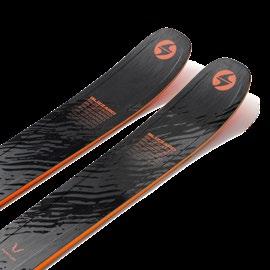
89
1 → 5 → 3 → 6 → 2 → 4 →
7. The all new ROSSIGNOL FORZA 50D V-CAM with NX 12 K GW BINDINGS uses oversize dimensions combined with oversize sidecut to support strong angulation and control through every turn. Matched with raceproven construction, this innovative shape lets you roll between turns with full angulation and maximum fun. www.skiisandbiikes.com // 8. The SMITH METHOD HELMET’s safety innovations including MIPS and zonal Koroyd offer enhanced energy absorption in the event of a crash. The self-adjusting fit system flexes to match your head shape for maximum comfort. SMITH 4D MAG GOGGLES offer their widest field of view and sharpest optics to give you the best possible read on the terrain. With the MAG quick-and-easy lens change, they’re the only goggles you need for all-conditions riding. www.smithoptics.com // 9. The insulated ARC’TERYX BETA JACKET is for cold conditions, designed for unrivaled versatility, durability and weather protection. Leveraging Coreloft Continuous Insulation and a more sustainable waterproof, breathable 40D GORE-TEX fabric, the Beta Jacket is the ideal wet-weather fall/winter companion. www.arcteryx.com // 10. Did you know 40 to 45 per cent of body heat is lost through the head and neck? Treat yourself to a PUFF—puffy-warm face protection made of ethically sourced white duck down—and stay outside longer. Designed in the Blue Mountains. A portion of the proceeds is donated to Protect Our Winters Canada. www.puffdesigns.ca // 11. Robust, waterproof and breathable, the RAB KHROMA DIFFUSE JACKET is a versatile ski shell constructed using 100 per cent recycled GORE-TEX face fabric. Two-way venting zips manage your temperature, and the longer length, rear hem adjustment and zip-off powder skirt are perfect for deep snow. www.rab.equipment // 12. With the new YETI RAMBLER COCKTAIL SHAKER, you can take the bar where you are with the ultimate drinkware and easy-press lid with 1 oz twist cap. It’s leak-resistant, double-wall vacuum-insulated and dishwasher safe. Any hour can be happy hour with drinks that are consistent and cold from first pour to last. www.yeti.ca

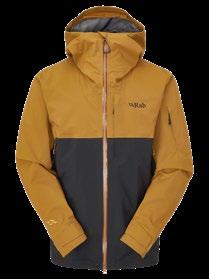





90 7 →
10 → 8 → → 9 → 11 → 12 →



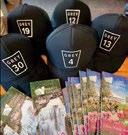






57 Hurontario St., Collingwood (705) 445-6222 Shop online at mindsalive.ca The laTesTToys books and crafTs for kids Outdoor toys • Craft Kits & Supplies • Games & Puzzles Science kits • Puppets & dress-up • Infant toys • Thomas And books for infants to teens Shop on line at www.mindsalive.ca Mon.-Fri. 9:30-6:00, Sat. 9:30-5:00 Sun. 11:00-4:00 27 Hurontario (705) 445-6222 10073 MTNLF Minds Alive_Winter 2010_FNL.indd 1 for kids of all ages Monday to Wednesday 10:00-5:30 Thursday and Friday 10:00-6:00 Saturday 10:00-5:30, Sunday 11:00-4:00 The Latest Toys, Books and Crafts for kids of all ages Outdoor Toys • Craft Kits • Games & Puzzles • Building Toys Science Kits • Puppets & Dress-up • Infant Toys • Books for infants to teens Experience LOCAL Experience COMMUNITY Explore GARAGE 13 We’re what you need for your journey through The Beaver Valley. 194355 grey road 13 . beaver valley . eugenia garage13.ca garage13.bv 416.629.0568 Local Artisan Goods Co�fee, Tea, Sweets & Ice Cream Escape to a slower pace of life on the East Coast. Enjoy walks on the beautiful beach, world-class seafood and island charm. Saltscapes Retreat boasts a beautiful large multi beach house compound just a short stroll from the red sands of PEI on one of the East Coast’s most picturesque beaches. Ideal for large groups - friends, family reunions, small corporate events, yoga retreats, or DIY weddings. To find out more information or to book, call or text 905-749-6262 or email saltscapesretreat@gmail.com
SALTSCAPES RETREAT
13. The BOA FIT SYSTEM that revolutionized precision fitting in snowboard boots is finally available in ski boots. The dial-tune tightening provides better comfort and performance versus a traditional buckle. Check out the BOA system in K2, Salomon and Atomic boots. Available now at Corbetts. www.corbetts.com // 14. THE NORTH FACE BASE CAMP MULE incorporates principles of circular design. Made with fewer parts and materials, it was designed for consumers to return at the end of its life, when The North Face will disassemble and recycle its components. www.thenorthface.com // 15. Train like a ninja with the SLACKERS NINJA LINE 36” INTRO KIT Offers seven obstacles including monkey fists, monkey-bar holds with triangle safety carabiners and gymnastics rings with textured finish. www.mindsalive.ca // 16. A robust, rich ale infused with American and French oak, the COLLINGWOOD BRICKS & MORTAR OAK AGED PORTER pours dark brown with aromas of vanilla, coffee and chocolate. Available at the brewery and LCBO for a limited time. www.thecollingwoodbrewery.com // 17. The trek-ready iGO OUTLAND CABOT RS E-BIKE is built for multi-discipline adventure. It feels like an acoustic bike, but with the tunable power and efficiency of a 48V/500W assist motor (offering five pedal-assist modes) to tackle any terrain. Available at Collingwood's first bike cafe, www.summitsocialhouse.com // 18. HILLSOUND TRAIL CRAMPONS are designed for stiff-soled boots and feature a carbon-steel plate system, reducing muscular fatigue and giving you confidence for your winter pursuits. www.hillsound.ca // 19. The FJÄLLRÄVEN NUUK LITE PARKA for women is a lightweight, mid-thigh version of the Nuuk Parka, designed for milder conditions. Waterproof, windproof and breathable, it protects against wind and rain on blustery autumn days. www.fjallraven.com



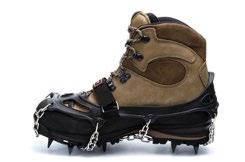


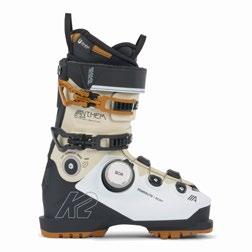
92 15 → 13 →
14 → 16 → 18 → 19 → 17 →
Fun things to do, all year long!

Great Entertainment All Year Round!
October 14 - A Night in Vegas
October 19 - André-Philippe Gagnon
October 20 - Tommy Youngsteen
Fleetwood Mac Rumours
October 21 - A Tribute to Gordon Lightfoot Classic Lightfoot Live
October 28 - Simply Queen
October 29 - Shaun Majumder - The Love Tour

November 2 - 100 Years From Now theatre / musical
November 3 - Shane Cook & The Woodchippers

Canadian and US National fiddle champion
November 11 - Sound of Remembrance
The Trews and Graham Trude, The Singing Soldier
November 22 - Hunter Brothers
November 23 - Danny Michel & Steve Poltz

November 24 - Matt Dusk sings Sinatra
December 7 - Forever Seger
December 9 - Susan Aglukark’s Upinnaq Christmas

December 13 - A Lunch At Allen’s Christmas
December 15 - Skydiggers Christmas

Visit us at www.meaford.ca (519)538-1060 tourism@meaford.ca SHOP | EXPERIENCE | ENJOY For these great shows and so many more, visit: meafordhall.ca Come play with us...we’ve got it all!
ar ts & cultural centre Since2006
have it all at Meaford Hall! DannyMichel & Steve Poltz Nov 23 Nov 3 Shane Cook and The Woodchippers S u san Aglukark Dec9 Dec 15
We
20. With its 4.5-inch tires, carbon fork, dropper post and modern geo, the TREK FARLEY makes riding a blast. It’s the ultimate go-anywhere fat bike. www.kamikazebikes.com // 21. The ELAN PRIMETIME 44+ offers accessibility, agility and a confident ride. Its 74-mm platform boasts a shorter turn radius with support and balance. Designed with PowerMatch technology for seamless energy transmission plus a dualdensity woodcore, and paired with the newly redesigned Fusion X binding system, the Primetime 44+ is for skiers seeking accessible performance in a wider piste ski. www.elanskis.com // 22. With its water-tight construction and unparalleled warmth, the XCEL DRYLOCK 6/5 MM HOODED FULL WETSUIT is made for the most extreme of conditions. Celliant Black Smartfiber in the core and Ultra Stretch IR maximize performance.

www.xcelwetsuits.com // 23. The SALOMON THUNDERCROSS is a trail shoe for a dynamic, cushioned ride with exceptional grip and precise foothold. Aggressive 5 mm lugs tackle any terrain. Tried and tested on everything from rolling terrain to rocky slopes or sticky singletracks. Available in breathable and GTX versions.


www.salomon.com // 24. The COLUMBIA ARCH ROCK DOUBLE-WALL ELITE hooded jacket checks the boxes for both warmth and weather protection, making it an easy favorite. It’s water-resistant and insulated with a thermalreflective lining. www.columbiasportswear.ca // 25. The BURTON STEP ON BINDING is snowboarding’s next evolution. Secure and ready for the entire mountain, it really does let you step onto your board and ride away. Compatible with Burton Step On boots to give you a great all-around medium flex. Available now at Corbetts.

www.corbetts.com // 26. A tribute beer to the amazing Collingwood-area community, the BLACK BELLOWS

EL 9 WYE is a crisp, refreshing and lightly malted helles-style lager. Great for porch sips and backyard strolls.

www.blackbellows.com

20 → 21 → 22 → 23 → 24 → 25 → 26 →










120+ Runs | 8,218 Top Elevation | 4,314ft Vertical | 3,400+ Resort Acres | 24ft Avg. of Champagne Powder
PH: Tim Grey





List your home with a RE/MAX at Blue Realty sales representative Call 705-445-0440 or visit our website Remax-BlueMountain.com visit our o ice in Blue Mountain Village, next to Starbucks. Proudly Serving Collingwood, Blue Mountain & Thornbury or Gerry Wayland Owner/Broker of Record 705-446-6690 gerry@remax-bluemountain.com
1 Name Recognition














RE/MAX is the No. 1 name in real estate* thanks in part to decades of extensive advertising. At just about every turn, potential clients find RE/MAX ads – across TV, radio, print, outdoor signage, the Web and social media. Chances are, you would have a hard time finding someone who has never heard of “RE/MAX.”
2 Unrivalled Expertise
Our experienced and knowledgeable agents are the reason RE/MAX is consistently ranked number one in several markets across Canada. We provide our agents with exclusive tools to ensure they have the skills they need to effectively guide you through the real estate process. Our o ice motto is Honesty, Knowledge and Goodness. Each RE/MAX at Blue Realty employee, sales representative or broker must live up to those three words.
3 Customer Satisfaction



The proof of quality service is in repeat customers and in customers who refer RE/MAX at Blue Realty team members to friends. RE/MAX at Blue Realty sales representatives and brokers typically generate a large percentage of their business from past customers and referrals. Our team is trusted and experienced.
4 Location Location Location


The RE/MAX at Blue Realty o ice is located in the heart of The Village at Blue Mountain right beside Starbucks. More than two million visitors walk past the o ice window each year. They don’t drive by at 60 kilometres per hour. They WALK past our window and review the listings prominently displayed. Why not put your home in our window?
5 RE/MAX at Blue Realty website



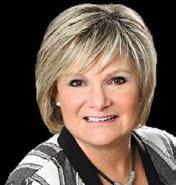











Just type “Real Estate in Blue Mountain” or “Blue Mountain Real Estate” in any search engine and the RE/MAX at Blue website consistently appears in the top 2 organic (unpaid) searches. That’s marketing power to help sell your home faster.

Kelly Cain Sales Representative 519-872-1356 Jamie Hibbard Sales Representative 705-994-3272 jamie@remax-bluemountain.com Debbie Pearce Sales Representative 905-334-9484 deb@remax-bluemountain.com Larry McKenzie Broker 519-673-7822 larry@remax-bluemountain.com Andrea Newton Sales Representative 705-351-0905 andrea@remax-bluemountain.com
A LIFETIME OF TRIPS
Someone recently told me I was on a “trip of a lifetime.” We were canoeing the rarely paddled Horton River in the Northwest Territories, heading downstream to the Arctic Ocean. It was a life-changing adventure I was grateful to be on, but something about the phrase made me flinch. Shouldn’t they all be trips of a lifetime?
I’m not sure of the indicators used to qualify a trip for this phrase: Is it the weather, the people, the landscape or the number of flights? Is it the cost of the entire endeavour? Does something need to go horribly wrong, or does everything need to go blissfully right?
The term suggests that some trips are worth more than others. That, for some reason, because you went so far or got your passport stamped x number of times, it qualifies. It suggests trips need to be epic to count. And they don’t.
A recent one-night campout comes to mind. Friday night in Sauble. We camped at the falls, rode our bikes along the beach for tacos, played mini-golf and sprained our fingers playing tetherball. Then we had a campfire. No one was there and the weather was perfect. What more do you need?
So why can’t a one-night campout in Sauble be considered a trip of a lifetime? Meaningful trips can sneak up on you. The metric for measuring a trip’s worth is unique to each individual. Every trip is different, and in that respect, every trip is a trip of a lifetime; you’ll never be in that place, with those people, at that age, ever again.
A trip of a lifetime doesn’t require you to remortgage your house. So why wait? Personally I’m planning another trip of a lifetime in November. And December, then one in January. I’ll do a lastminute one in February, and probably in March, too.
When’s your next trip of a lifetime? –Colin Field

98 Greg Sturch, trippin’. COLIN FIELD BACK PAGE












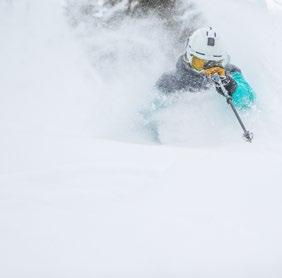

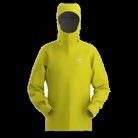













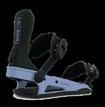




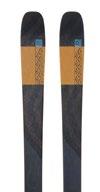


30 31 1 2 3 9 13 14 15 16 17 20 21 22 23 27 28


















































 Austin Smith | Snowboarder, The North Face Athlete Team
Austin Smith | Snowboarder, The North Face Athlete Team

























 words :: Carl Michener
words :: Carl Michener

































 JOHN DRYDEN
JOHN DRYDEN













 words & photos :: Colin Field
words & photos :: Colin Field




























 illustration :: Lani Imre
illustration :: Lani Imre

















































































































































































































































